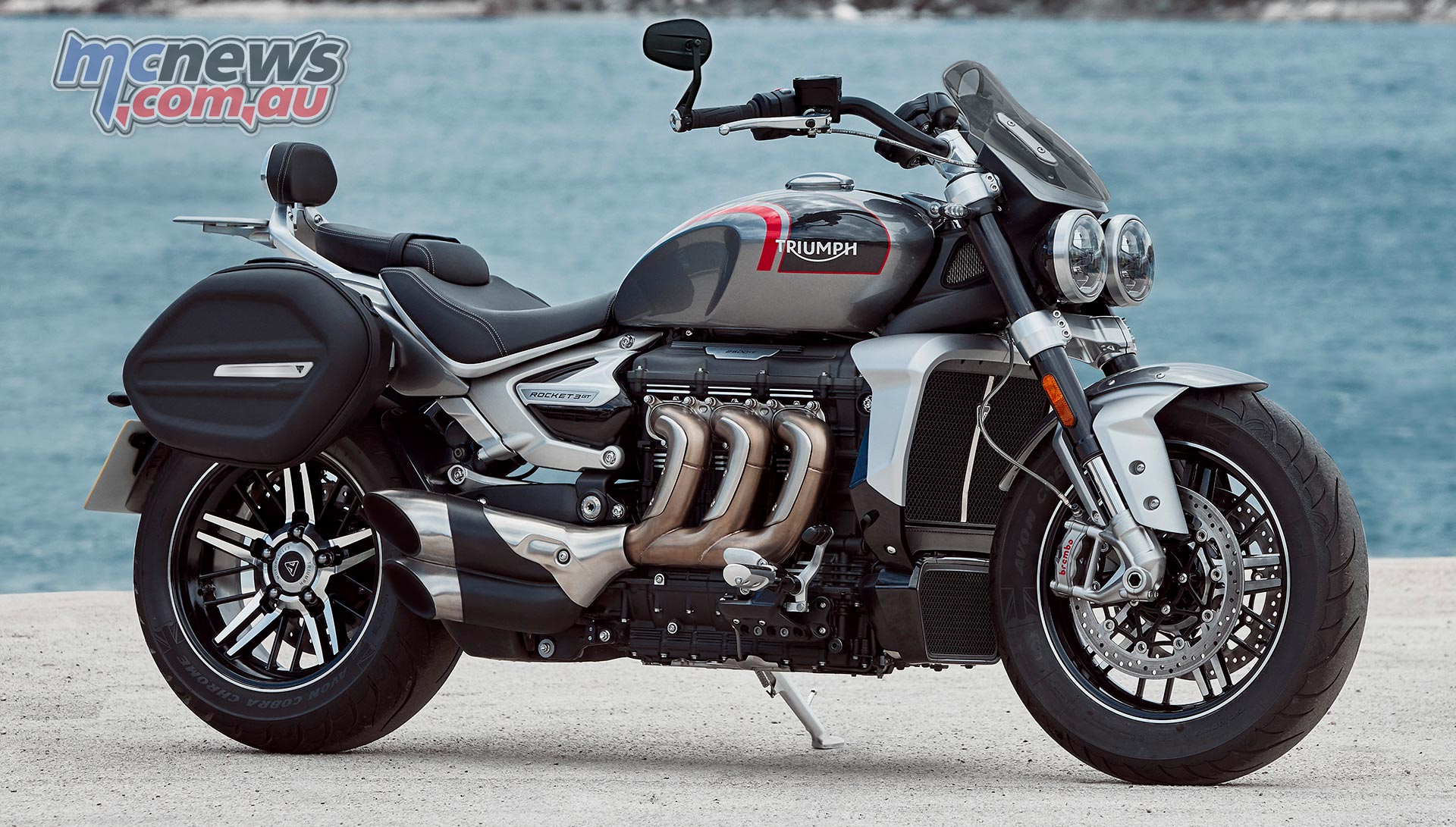Triumph Rocket 3 Review
Motorcycle Test By Trevor Hedge
The original Rocket III made quite a splash with its gargantuan 2.3-litre triple back in 2004. Starting out as something of a naked roadster, with a difference, before developing a touring style bent with more comfort, wind protection and other travel related accoutrements in the Rocket III Touring. The model line has been fairly popular in Australia with more than 2200 Rocket III machines hitting Australian roads.
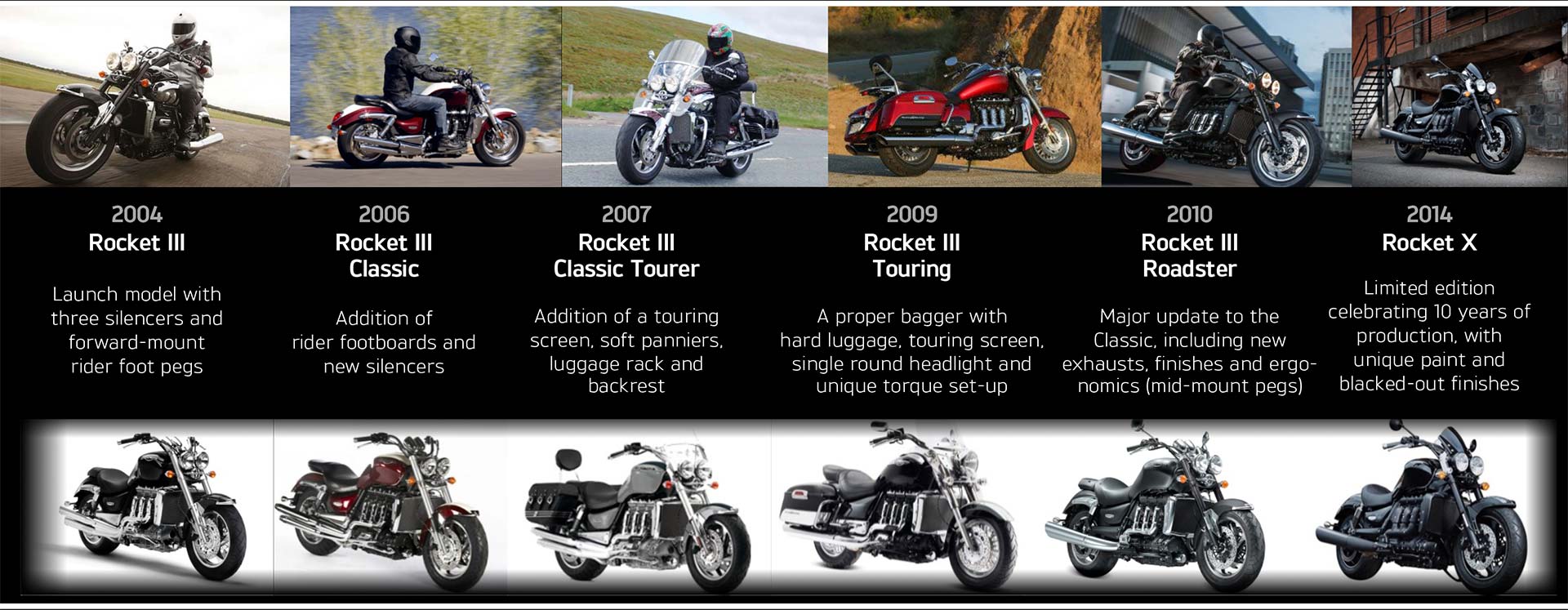
For 2020 the Rocket III has now changed its moniker to Rocket 3 and has had its biggest ever revamp. It is essentially all-new, and most definitely a major leap forward in every respect while packing a much bigger punch than before. It is now offered in two models, Rocket 3 R and Rocket 3 GT. Their respective catchcrys are ‘ultimate muscle roadster’ for the R, while the GT is given the tag line ‘built to go further, in more comfort’.
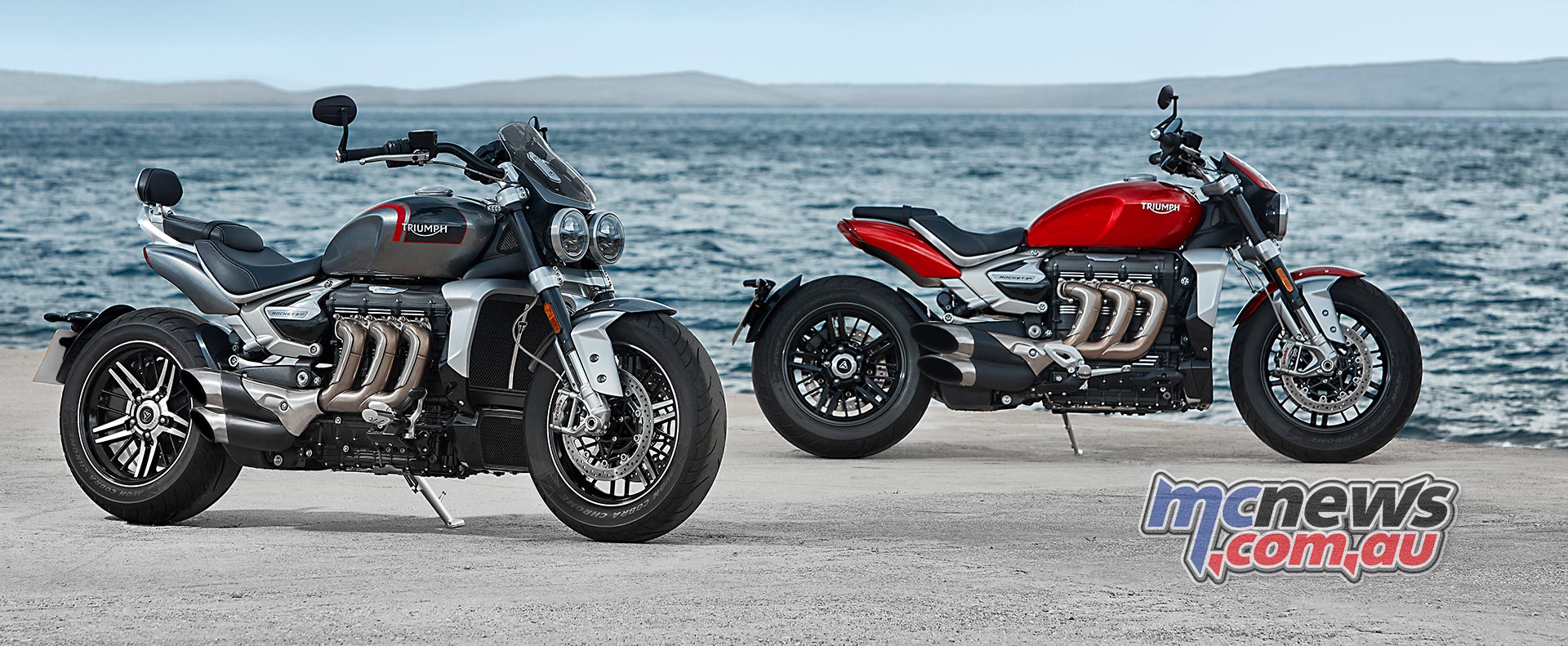
Triumph Australia have priced the new arrivals at $27,990 for the R, and $28,990 for the GT. For that you’re getting some pretty epic bang for the buck. I should also highlight just how much cheaper the Rockets are to buy here than in the UK. Brits have to fork out 20,000 pounds for these machines which works out to almost 40k in our money.
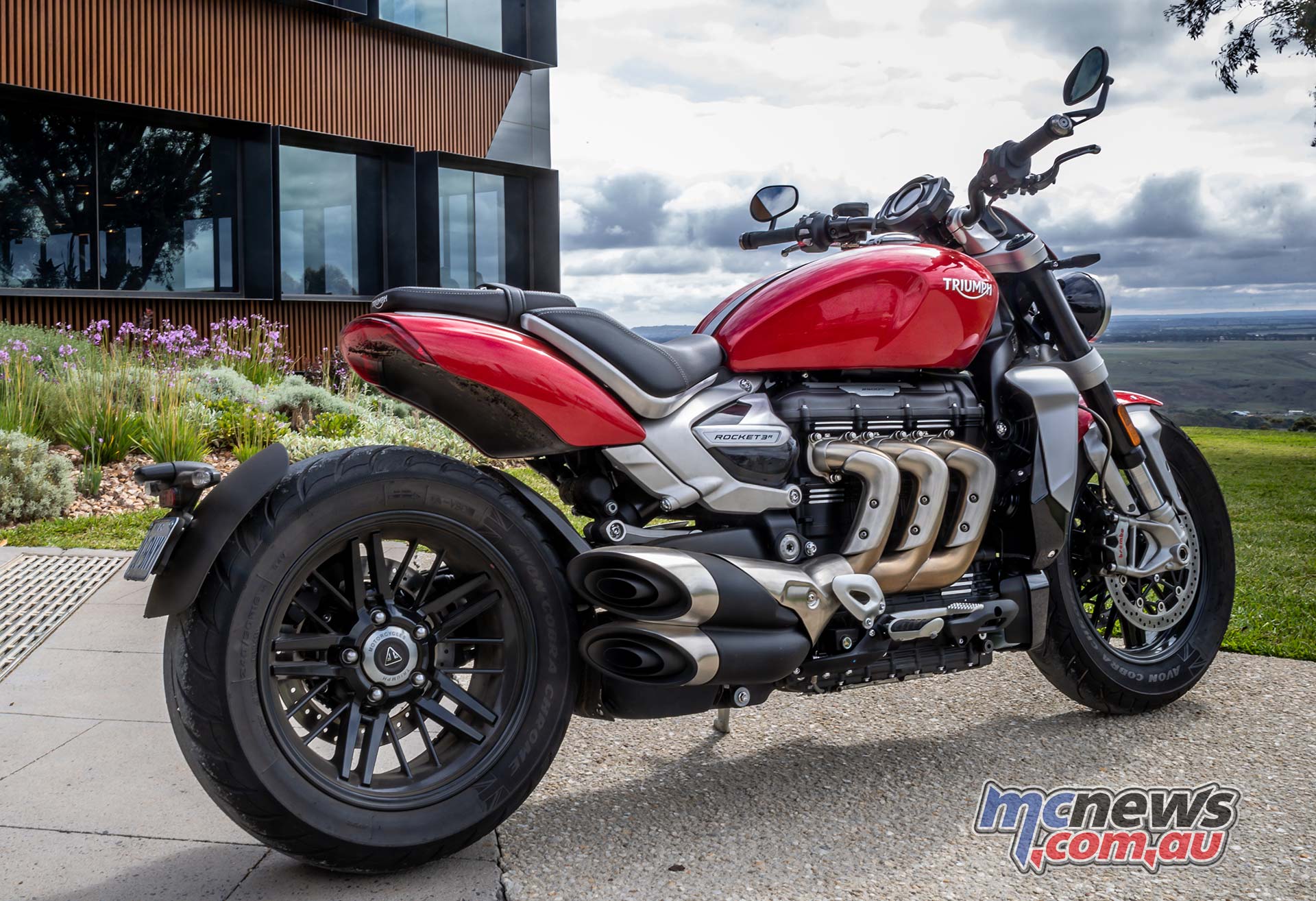
And bang, jaysus there is some bang. Let’s start with the engine, it is all about the engine. I mean just look at the thing, it is all engine!
What brought home to me just how bloody strong and effortless the low down pull from the Rocket 3 is was jumping back on the long term KTM 1290 Super Adventure S after two days on the Triumph. Less than an hour after getting off the big triple I headed home on the KTM and as I wound the throttle on to pull away it felt like twisting the throttle of a Royal Enfield…
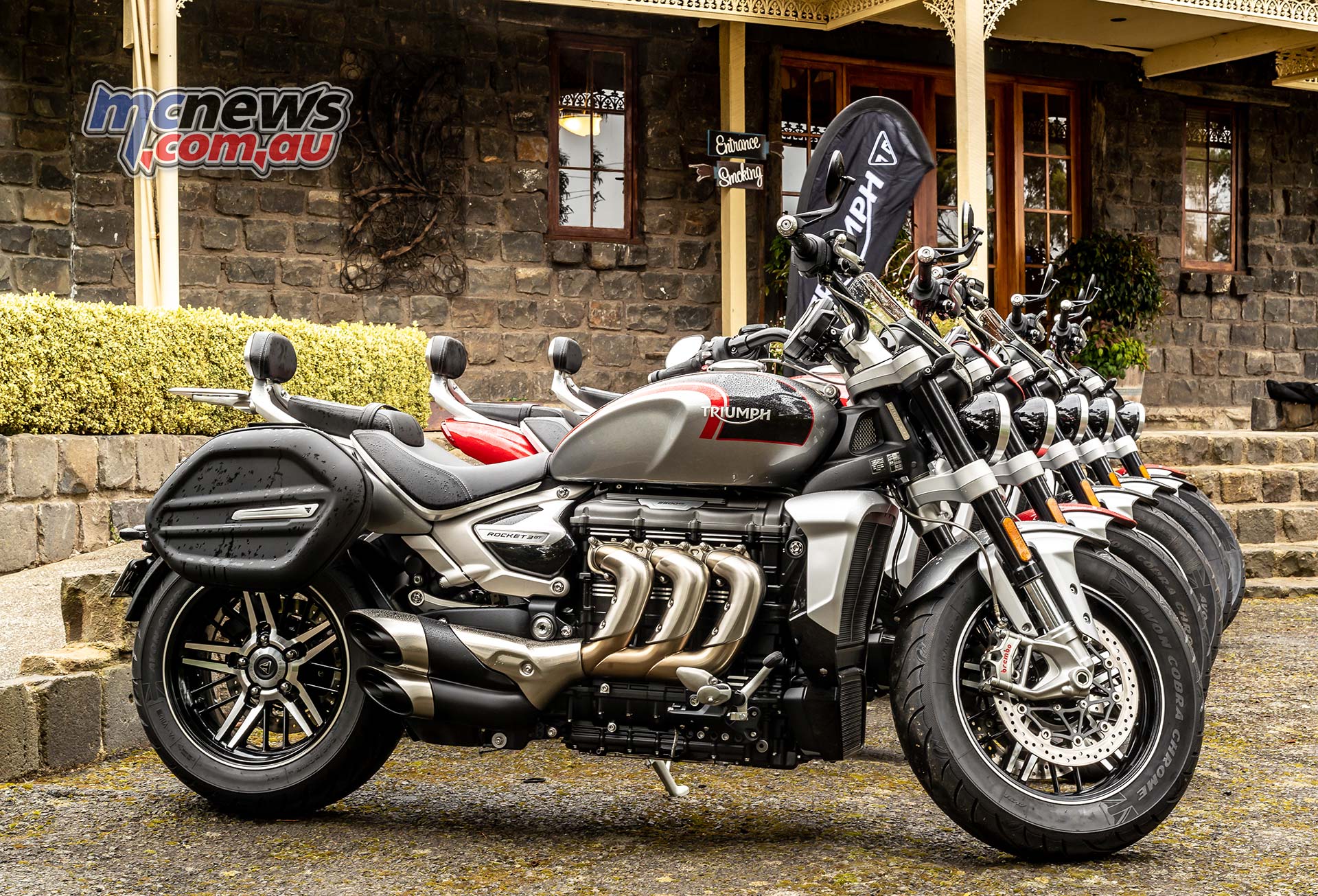
Seriously, the KTM LC8 engine is one of the most epic in motorcycling, and truly hedonistic once the revs rise, but I had never before had the feeling that the rush of torque on the KTM had any sort of real delay, but now all of a sudden it really did feel like I was waiting for the grunt to arrive… This is an engine with 108 Nm of torque at 2500 rpm, now all of a sudden it felt pretty lifeless until the tacho swept past 6000 rpm on the way to its peak twist of 140 Nm at 6750 rpm. The last of the big twin Ducati sports-bikes, the 1299 Panigale R Final Edition makes about the same torque as the KTM but at a much higher 9000 rpm, so it would feel even more breathless down low than the Austrian when compared to the Brit.
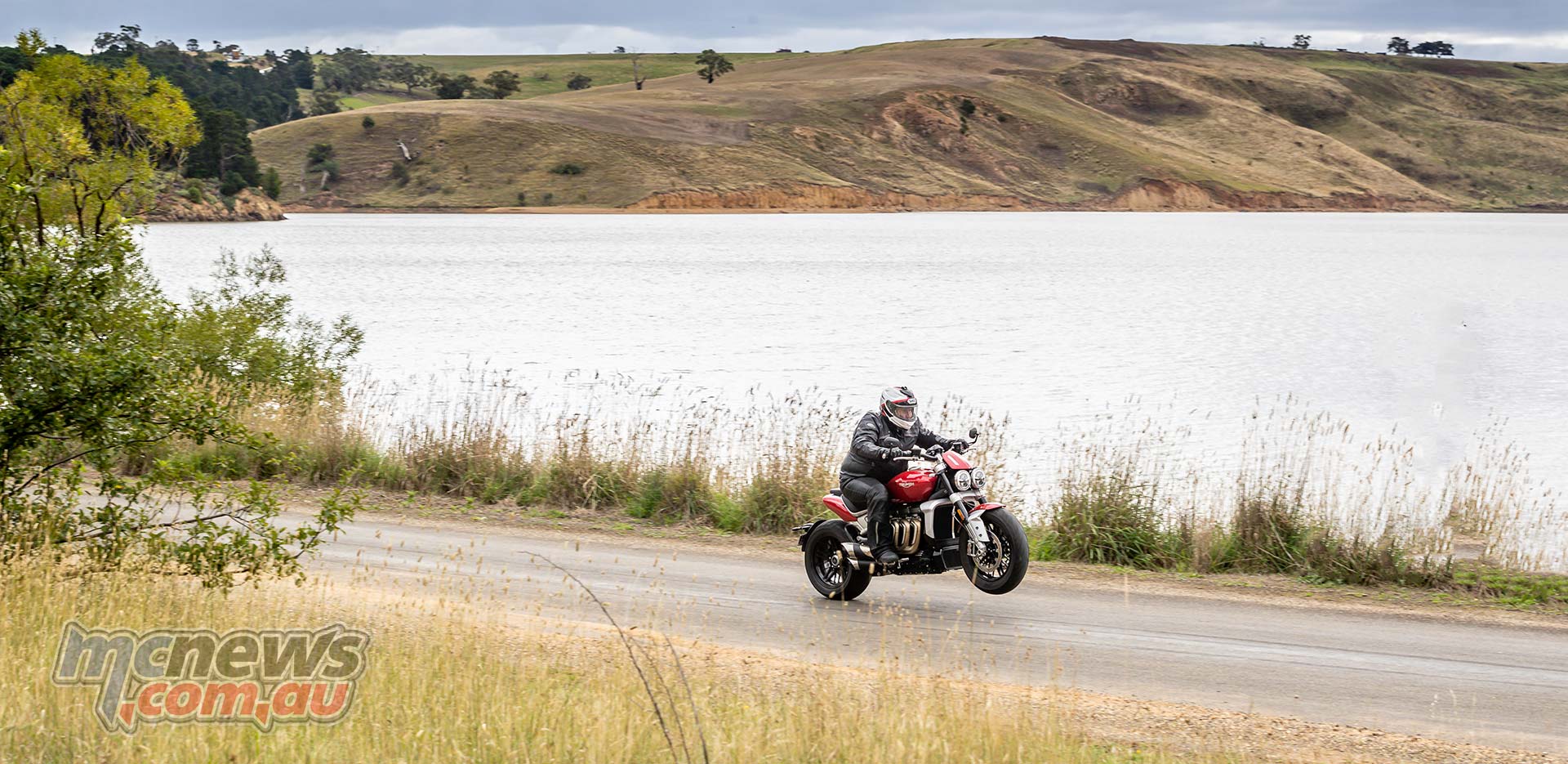
By 2500 rpm the Rocket 3 is already making 200 Nm on its way to a 221 Nm peak at 4000 rpm. That 2500 rpm figure understates why all of a sudden it felt as though I was waiting for the kick from the KTM. Just off idle the Triumph is already generating way more meaningful thrust than any sporting motorcycle musters anywhere in their RPM range.
I guess a lot of people interested in the Rocket 3 would be instead measuring it against the latest and greatest from Harley-Davidson. Now I don’t think anyone has ever described a Harley as powerful, but they do grunt pretty well off the bottom. The latest Milwaukee-Eight engines make 160Nm of torque at a relatively early 3500 rpm but compared to the prodigious pull of the Triumph the H-D still feels very poorly endowed. Just off idle the Rocket 3 is already making more torque than the Harley makes at its peak, and then rockets through to a power peak that is almost double that of the American bike…
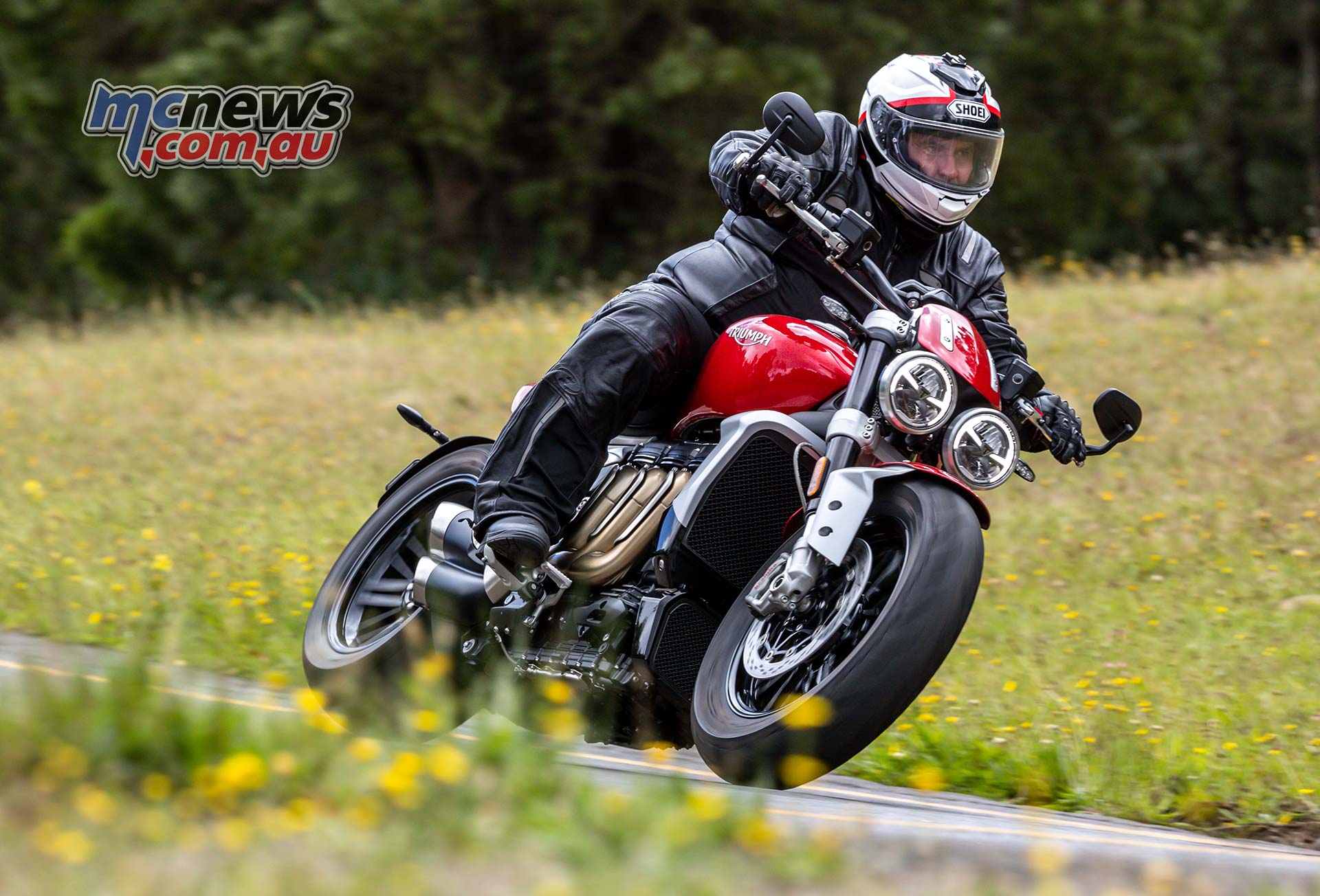
Really though, it is not until you jump off the Triumph and on to something else you thought was grunty, before you realise just how much bigger the Brits balls are. The smooth power delivery of the Rocket 3 serves to understate just how strong it actually is. You know it has plenty of stick, but you just don’t realise just how big that stick is until you compare it to something else back to back. Simply put, the fact of the matter is that nothing can hold a candle to the Rocket 3 when it comes to effortless shove.
And you can use all of that grunt, all of it, all of the time.

The beauty of all that twist being so low in the rev range means you get to enjoy it from every stop sign or traffic light. You are not sailing past the national speed limit before you get to feel that mighty torque shove. Sure, in top gear the Rocket 3 is only turning 2000 rpm at 100 km/h, but you do get to spin it up to peak torque a few times on the way there without the threat of having your motorcycle confiscated by the fun police for a month in the process.
For such a massive engine the gearbox and clutch is surprisingly slick and really does make a mockery of the archaic shift mechanisms we suffer through on the big twin cruisers. The shaft drive system negates the need for chain or belt maintenance and overall the whole drivetrain feels very polished indeed.
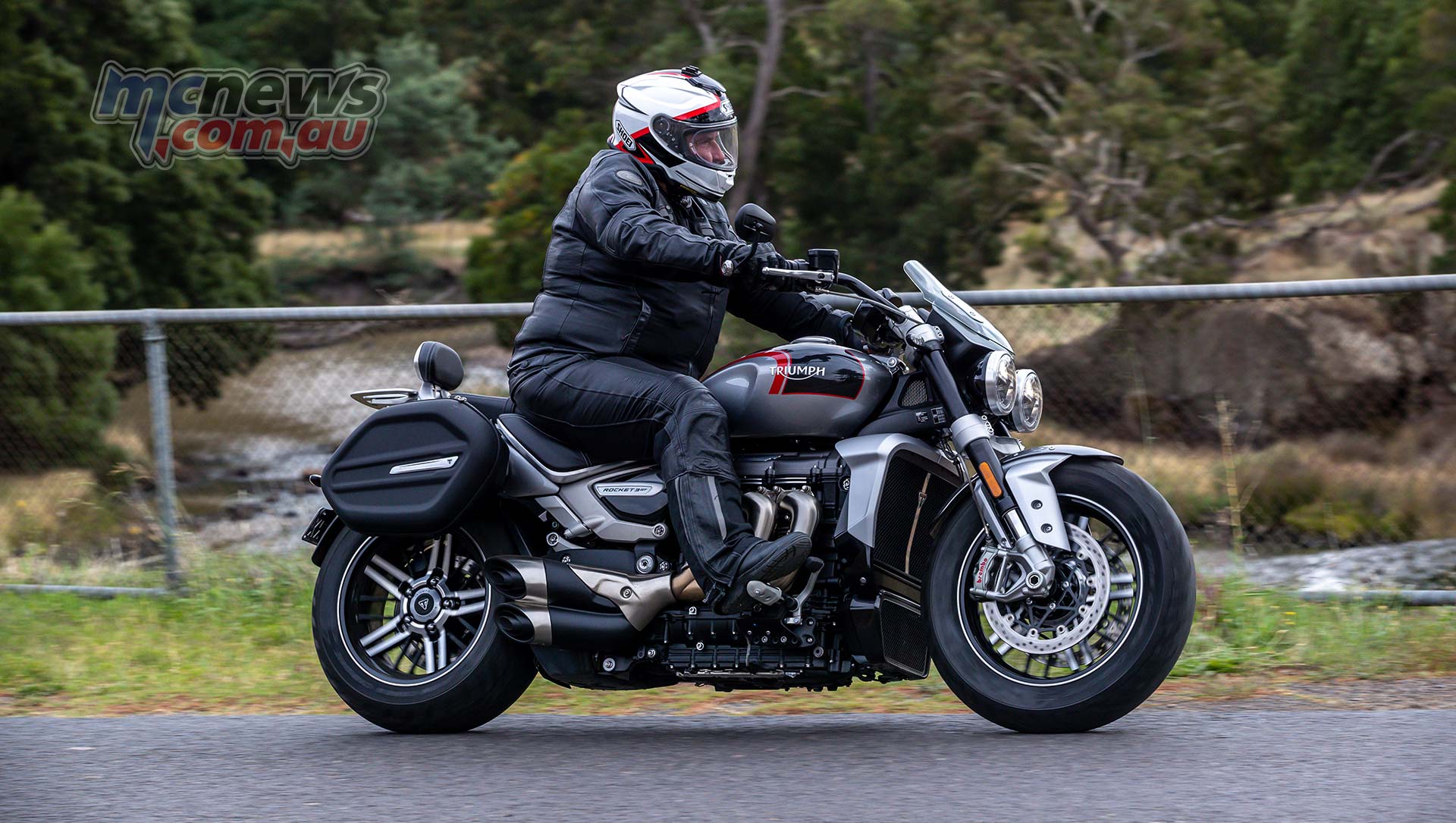
The shaft-drive is new for 2020 as is the more precisely engineered helical cut gearbox and torque-assist hydraulic clutch. Pretty much everything inside the crank-cases has also changed, as have the crank-cases themselves.
Despite the significant increase in capacity Triumph have shaved 18 kilograms off the engine and a total of 32 kg from the drivetrain as a whole. They are some pretty massive numbers and indicate that Triumph has really put everything they have learned in recent years into the new generation Rocket 3.
Above 4000 rpm, incidentally by which time you are doing over 170 km/h and still 3000 rpm from red-line, a few vibes can be felt, but below that it is a very smooth experience.
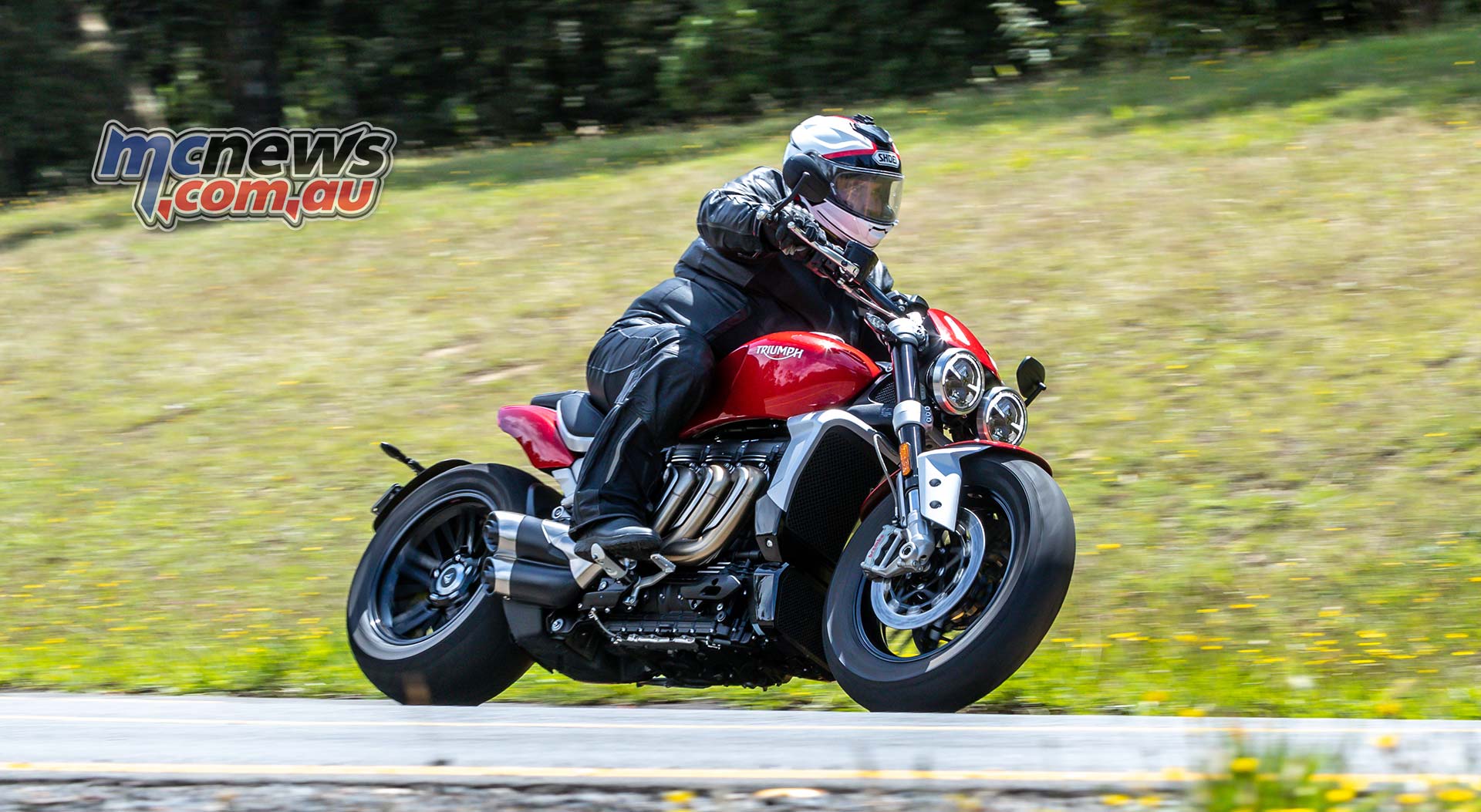
The only other mild criticism I can level against the drivetrain is that the Rocket 3 could bring a little more theatre to the riding experience. This could be easily remedied by a set of aftermarket pipes adding dramaturgy to the histrionics.
On the pipe score however, top marks must go the stylists for getting the look of the headers just right. They are the styling master-stroke of the whole machine and punch your optic nerve right every time. I just wish the auditory nerve was hit as hard. There is a bit of crackle and pop on over-run that adds to the experience but it would be nice to hear it exhale fully under power.

Surely it can’t be long until someone hangs a turbo off those headers? I mean they are out in the breeze just begging to blow through a snail and at only 10.8:1 compression the stock engine could probably handle a bit of boost.
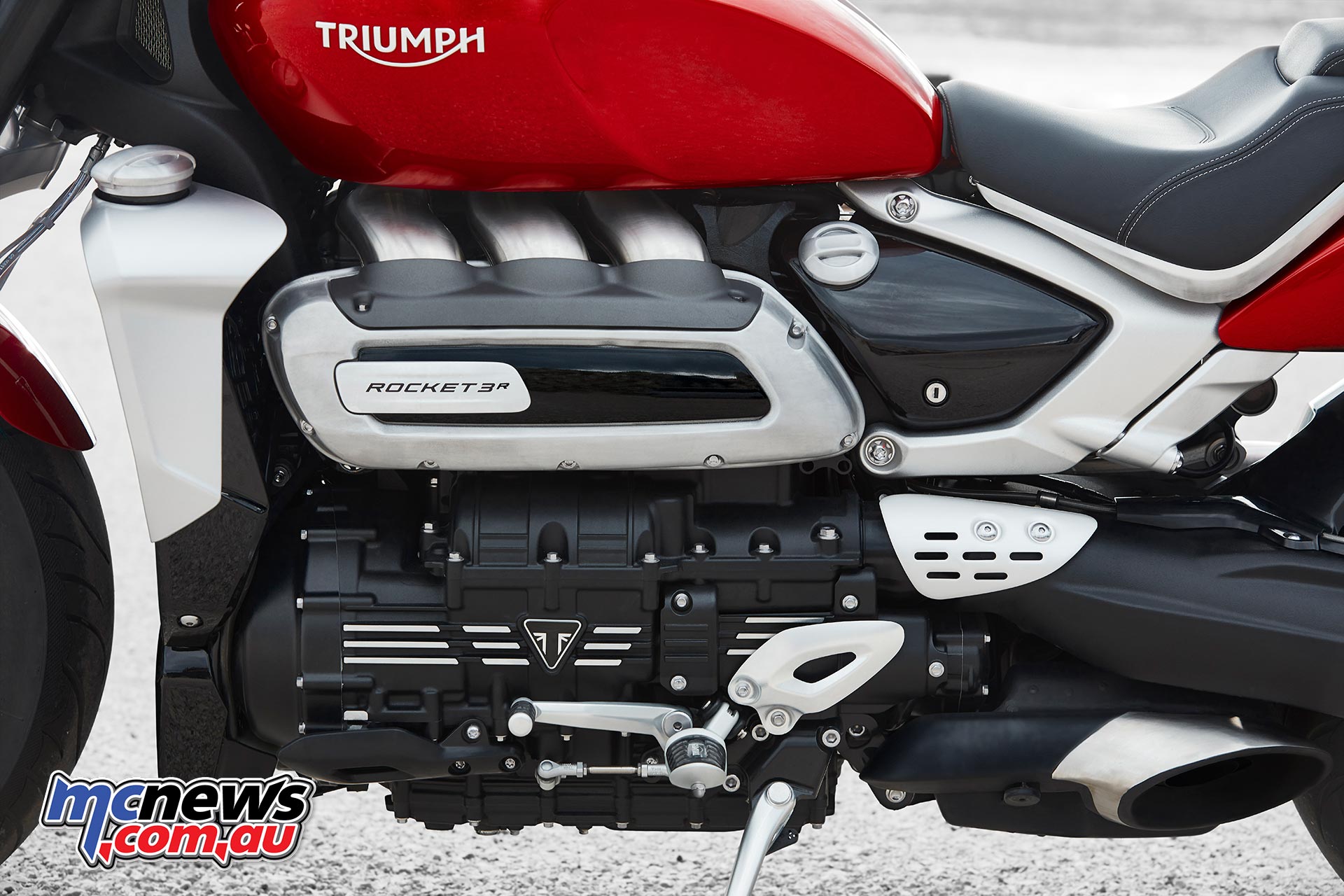
Plumbing that compressed air back around the other side to the air-box and triumvirate of throttle bodies might be a little harder though, and your right leg might get a bit warm… Still, I am sure some glorious bastard has a turbo system in development right now, and all power to those up for such a task, may the force be with you…
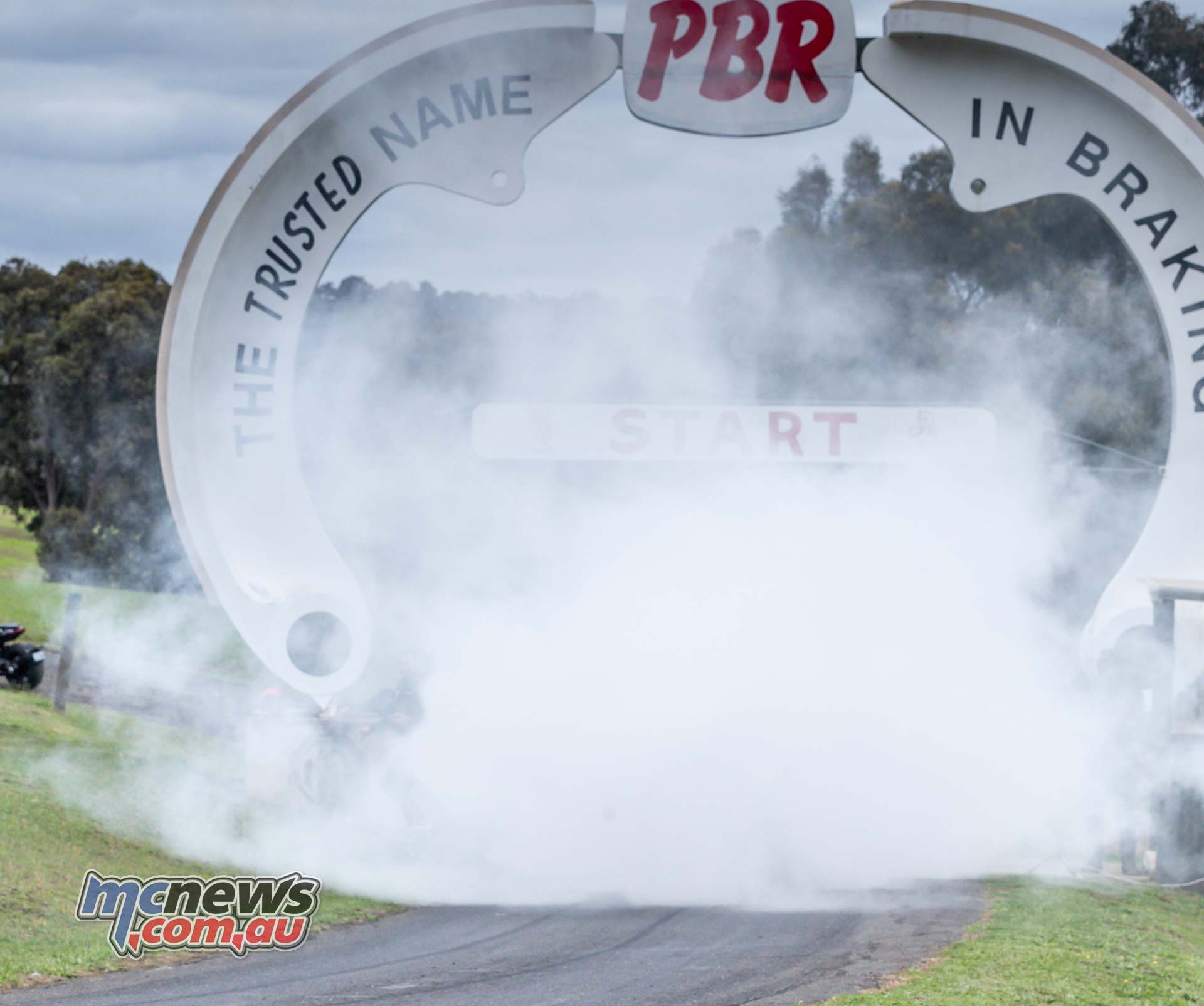
The new chassis seems largely up to the job. The new aluminium frame is stronger but 50 per cent lighter than before. All up the new generation Rocket 3 is 40 kg lighter than its predecessor. It even turns reasonably well considering it wears a fat 240/50-16 Avon Cobra rear hoop. If you get up to the sort of lark pictured here you will be glad to know that rear wheel removal is a simple five nuts and off it comes affair, with nothing else to remove in order to get the rear wheel out.
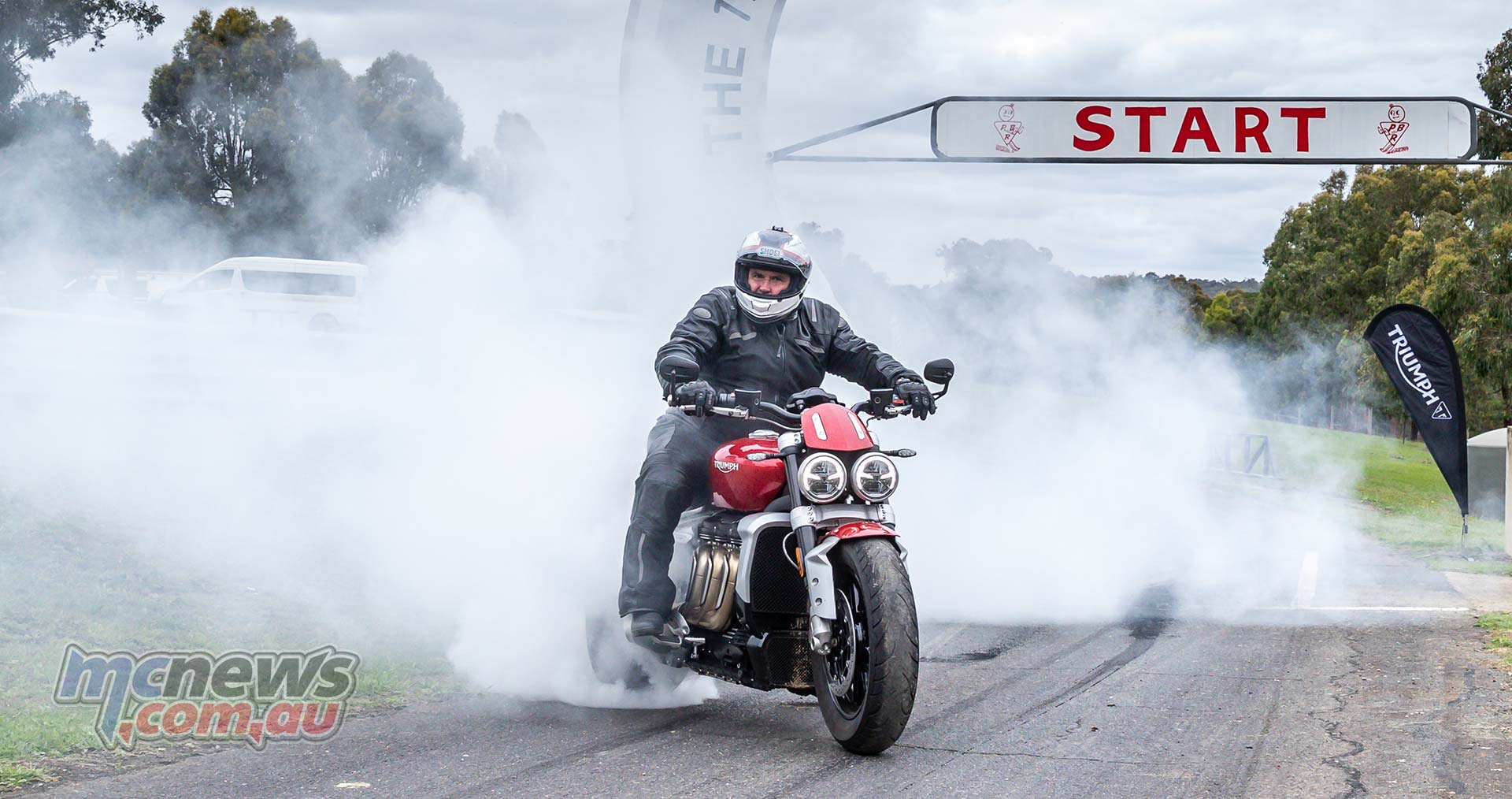
The forks cope with big hits fairly well but the same can’t be said of the rear shock. Rear suspension design is always a compromise on machines such as these and while the lay-down shock appears to be a high-specification Showa unit that is fully-adjustable and sports a piggyback reservoir, it only has 107 mm of rear wheel travel to play with and that is always going to be a big ask on our shitty roads. Preload adjustment is by hand-wheel which makes dialling in some more spring support an easy task but still, big hits make their way through to the rider. The hits come harder on the GT due to its more upright riding position.
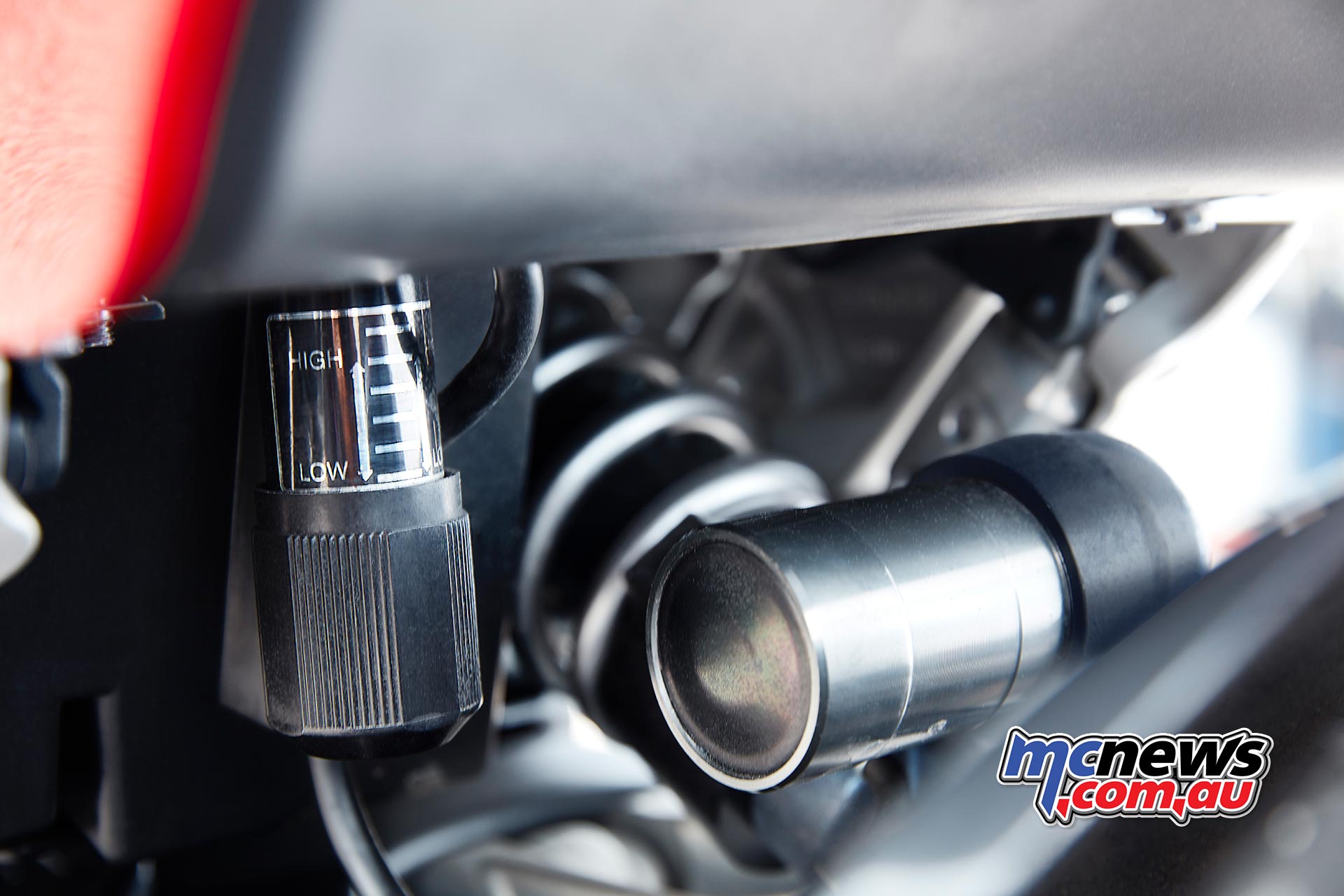
Don’t get me wrong, the Rocket 3 handles brilliantly compared to anything cruiser based. There is no wallow or twist, just don’t expect the cornering prowess afforded by a sports-touring bike or adventure machine.
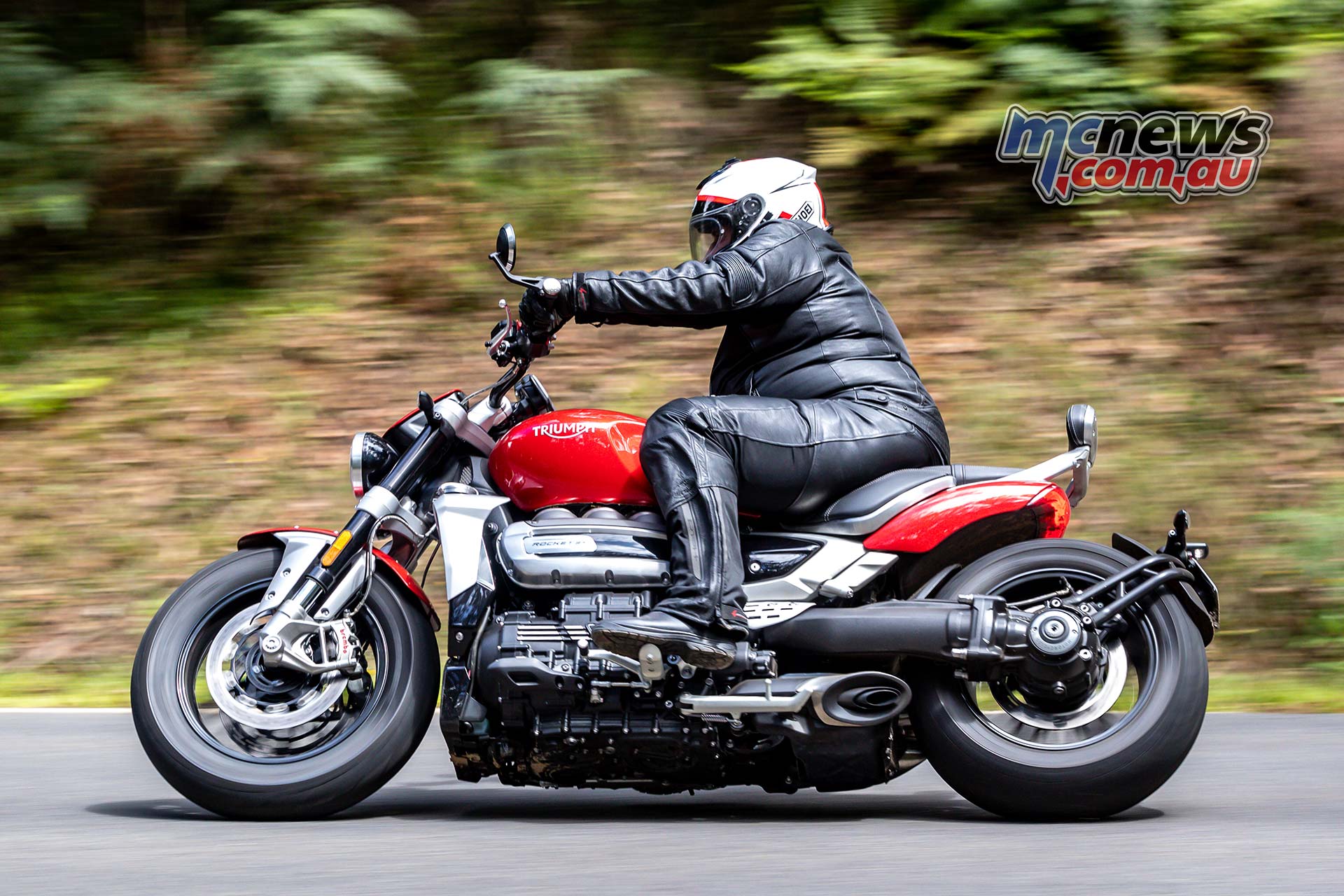
On smoother tarmac the package works well enough but if carrying a pillion you would want to hope they were light. On the passenger score, the way the pillion pegs fold out when needed, yet disappear into the flanks of the machine when not is a particularly brilliant piece of design that I am sure will be copied by manufacturers the world over.
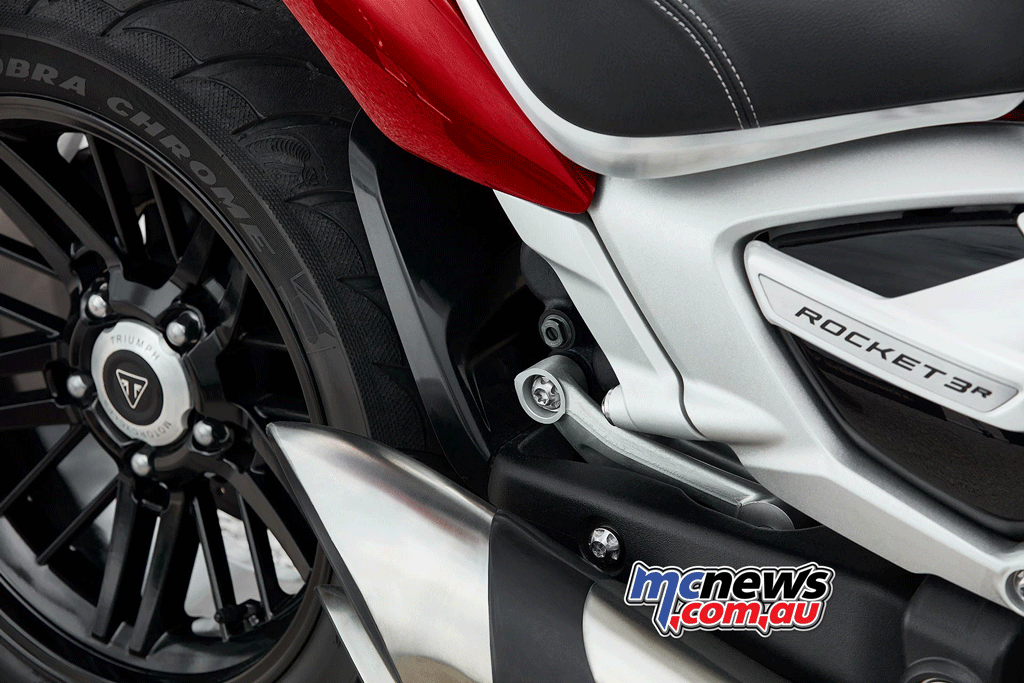
It isn’t the easiest of bikes to master in regards to tight parking manoeuvres as despite the throttle being wonderfully smooth once opened, the initial pick-up from closed reminds you that a whole lot of engine is spinning underneath you. I am sure a more deft touch could be developed by the rider if on one all the time though.
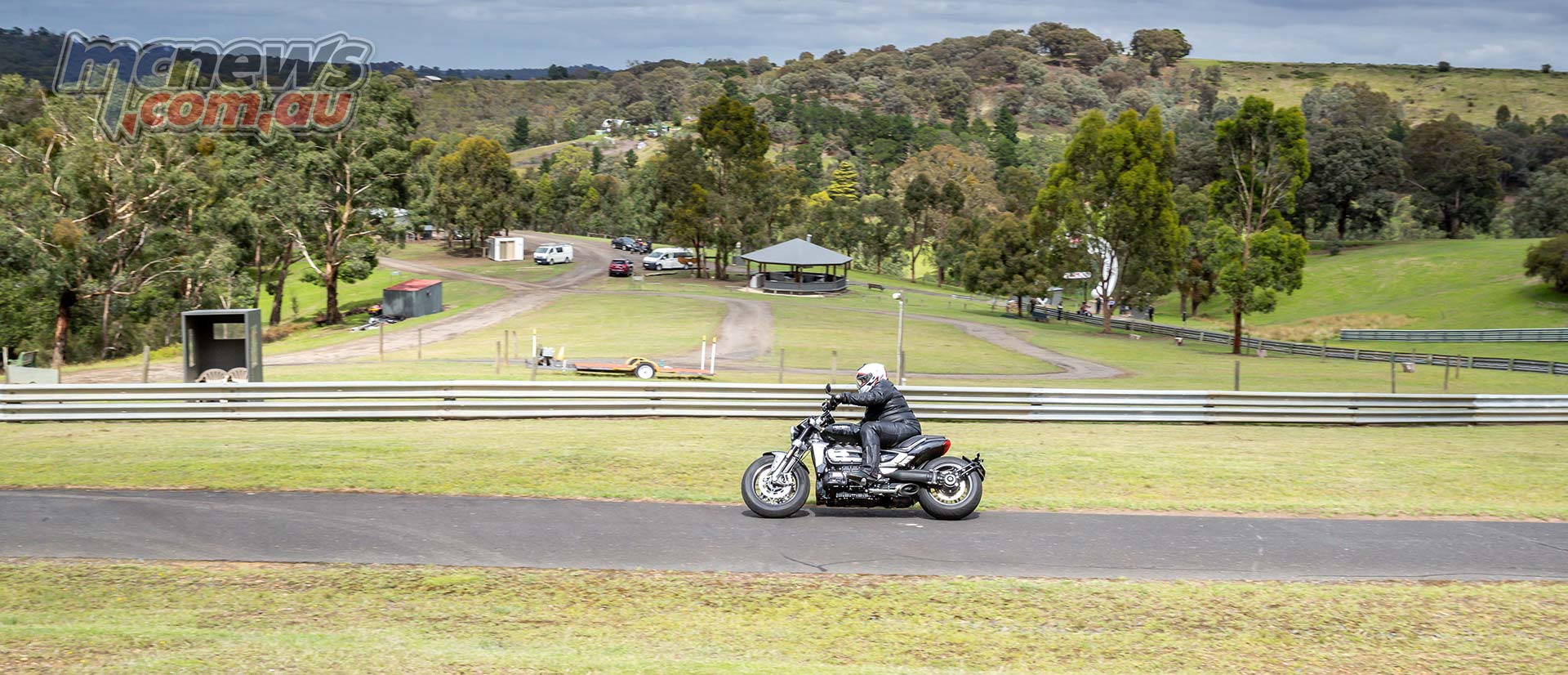
Through sweeping bends it holds a line well and is agile enough to inputs despite its long wheelbase and relaxed rake.
On the comfort scale the Rocket 3 fares pretty well also. The seat is well designed and offers great support in all the right places. The GT gets a more comfort oriented seat but both options give little to complain about. The seat on the R is 773 mm from terra firma while the GT rider sits almost a full inch lower at 750 mm.
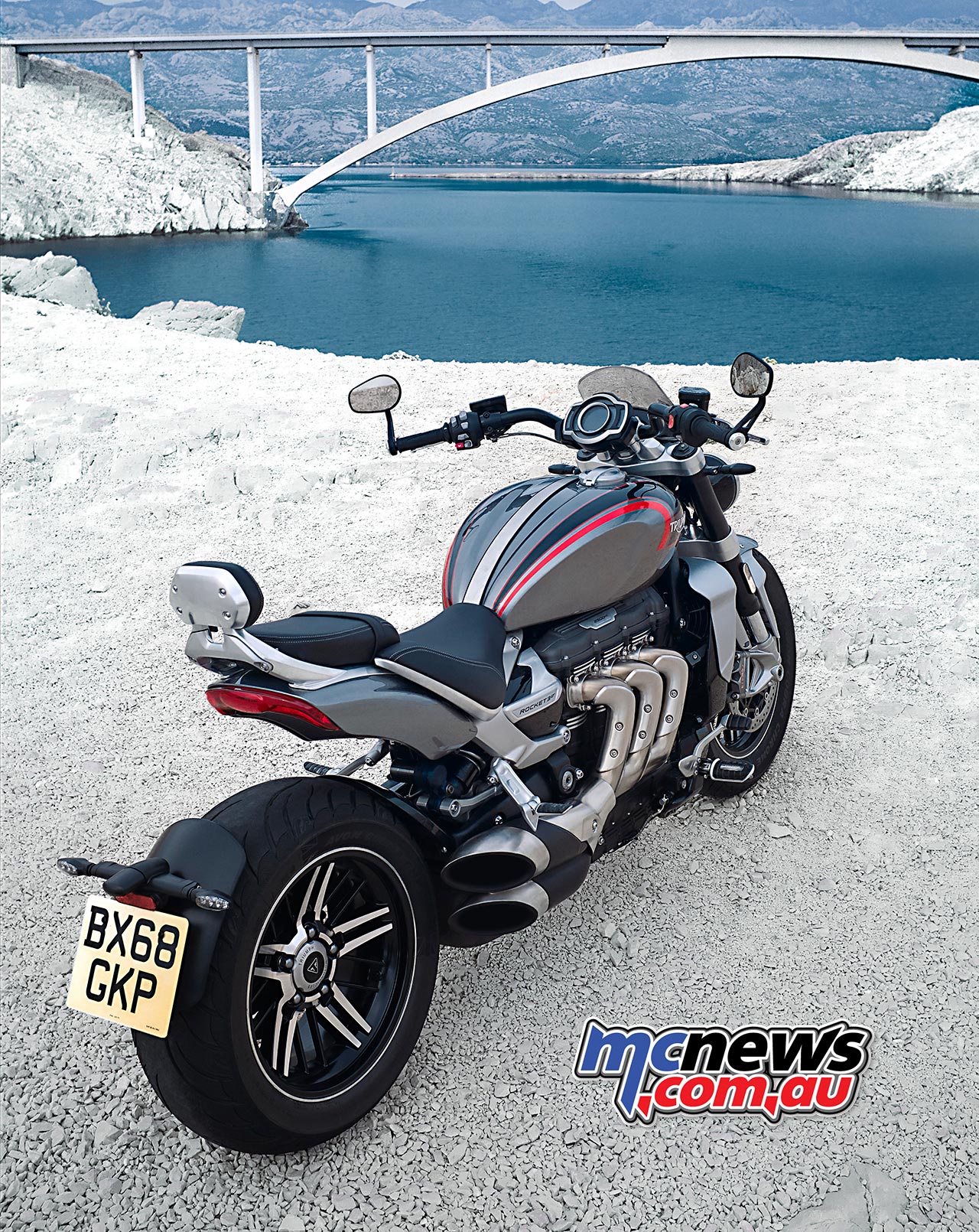
The GT also gets a slightly larger but still fairly minimalist windscreen while the rims score a milled face that stands out a little more from the all-black finish the R has on its rims.

I expected to hate the forward foot controls on the GT but they actually grew on me. The relatively generous ground clearance is not compromised, nor is shift quality or brake operation. That must have took a lot of work to get right and kudos to Triumph for not cutting corners and doing things half-arsed. The pegs can also be moved through three settings that tailor the reach by 25 mm each way.
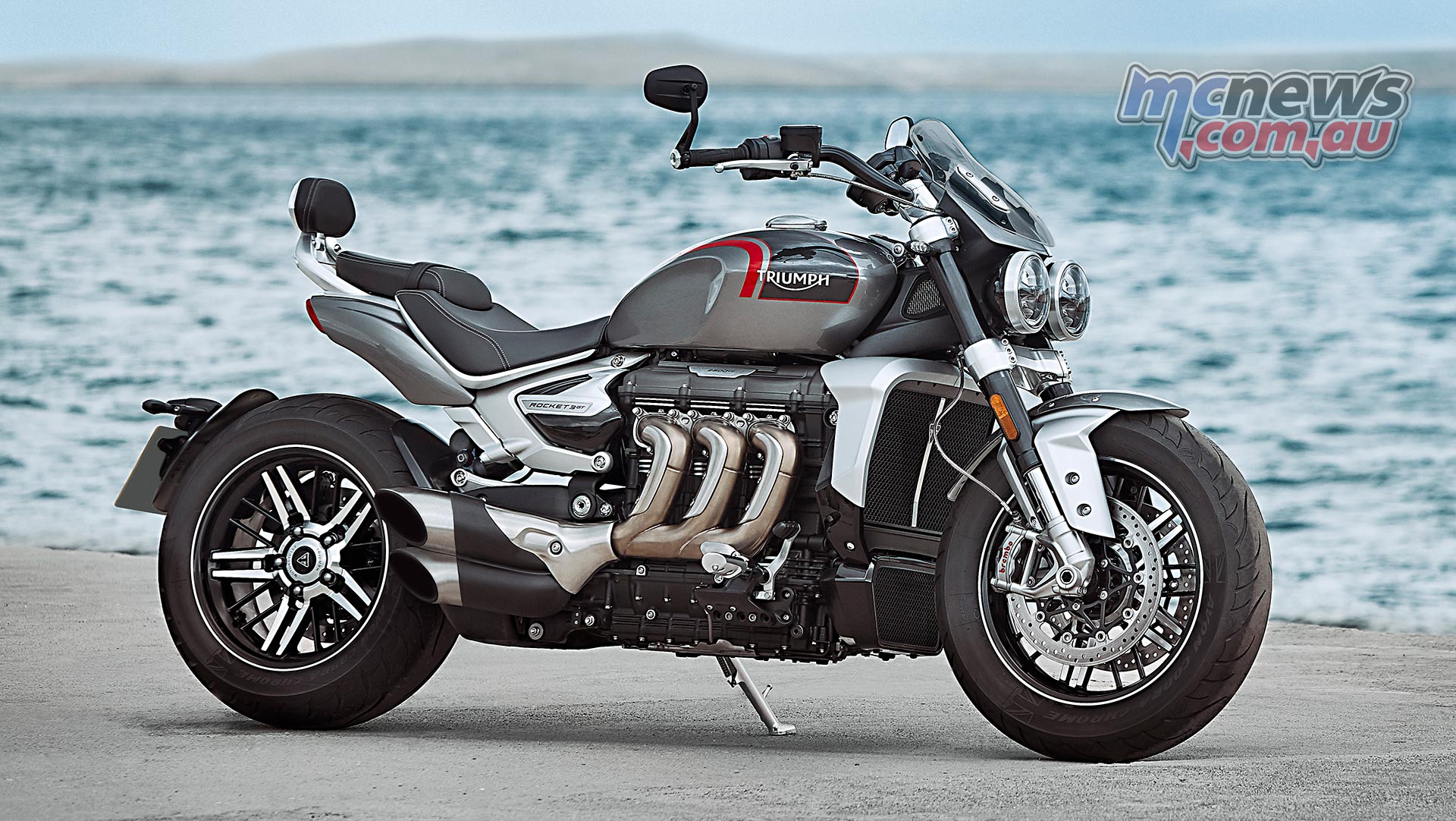
The mid controls of the R are adjustable through 15mm in the vertical axis and while they feel the most natural at first, I am actually a little torn between which lay-out I preferred. Kits are available from Triumph to put the forward controls from the GT on to the R, and vice-versa.
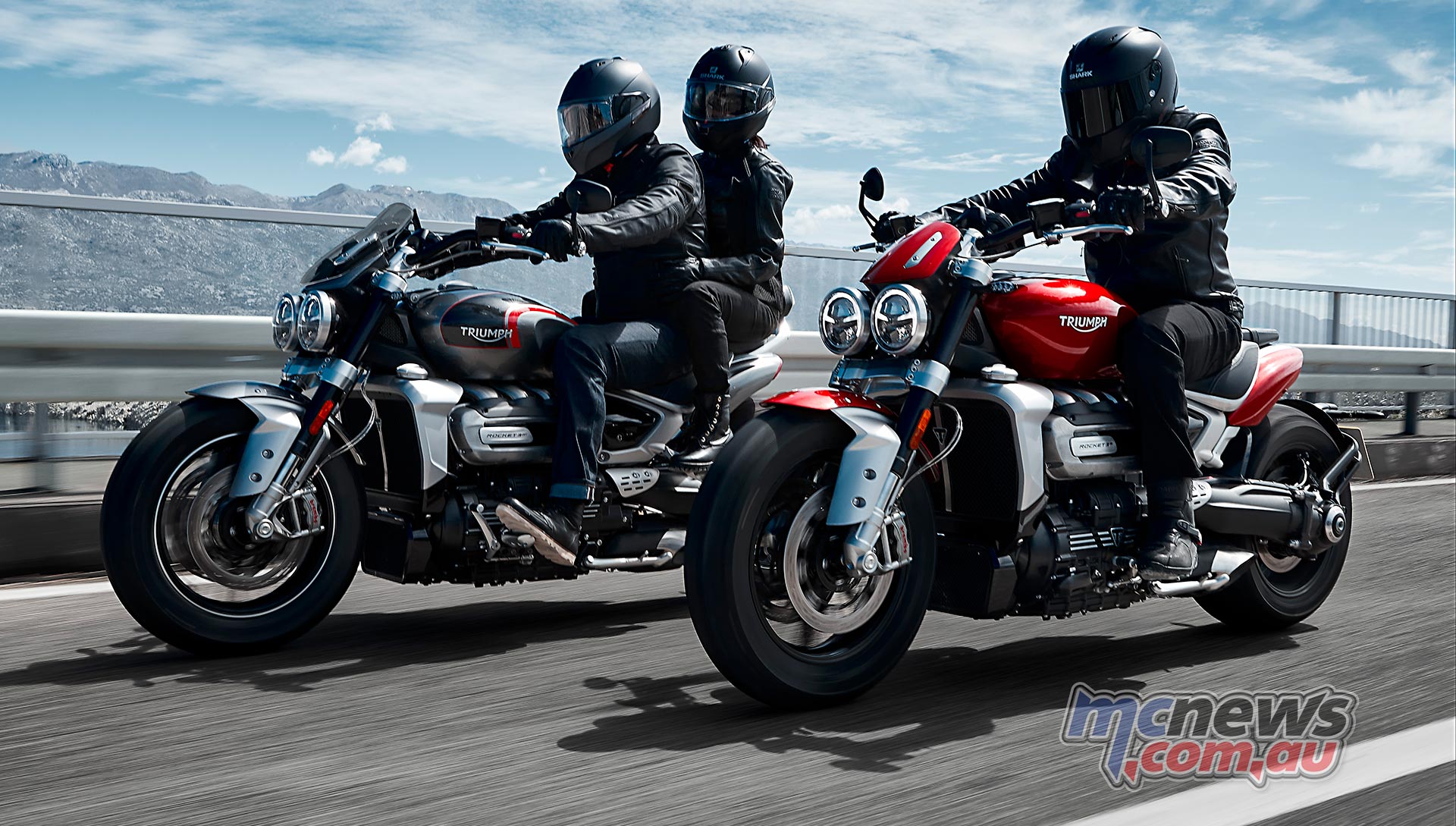
The reach to the bars also presents a stark difference between the two models with the GT bars more upswept and a much easier reach than the R, which has its grips 125 mm further forward. The stretch to the bars on the R felt a little long at first, but I soon became accustomed to it and didn’t find them uncomfortable at any point during our two days on the bikes. Neither lay-out is particularly extreme and thus both prove quite agreeable. Again, home work has been done well and there are further nice touches like the wiring being ran internally through the bars to clean up the look of the cockpit. Nice.
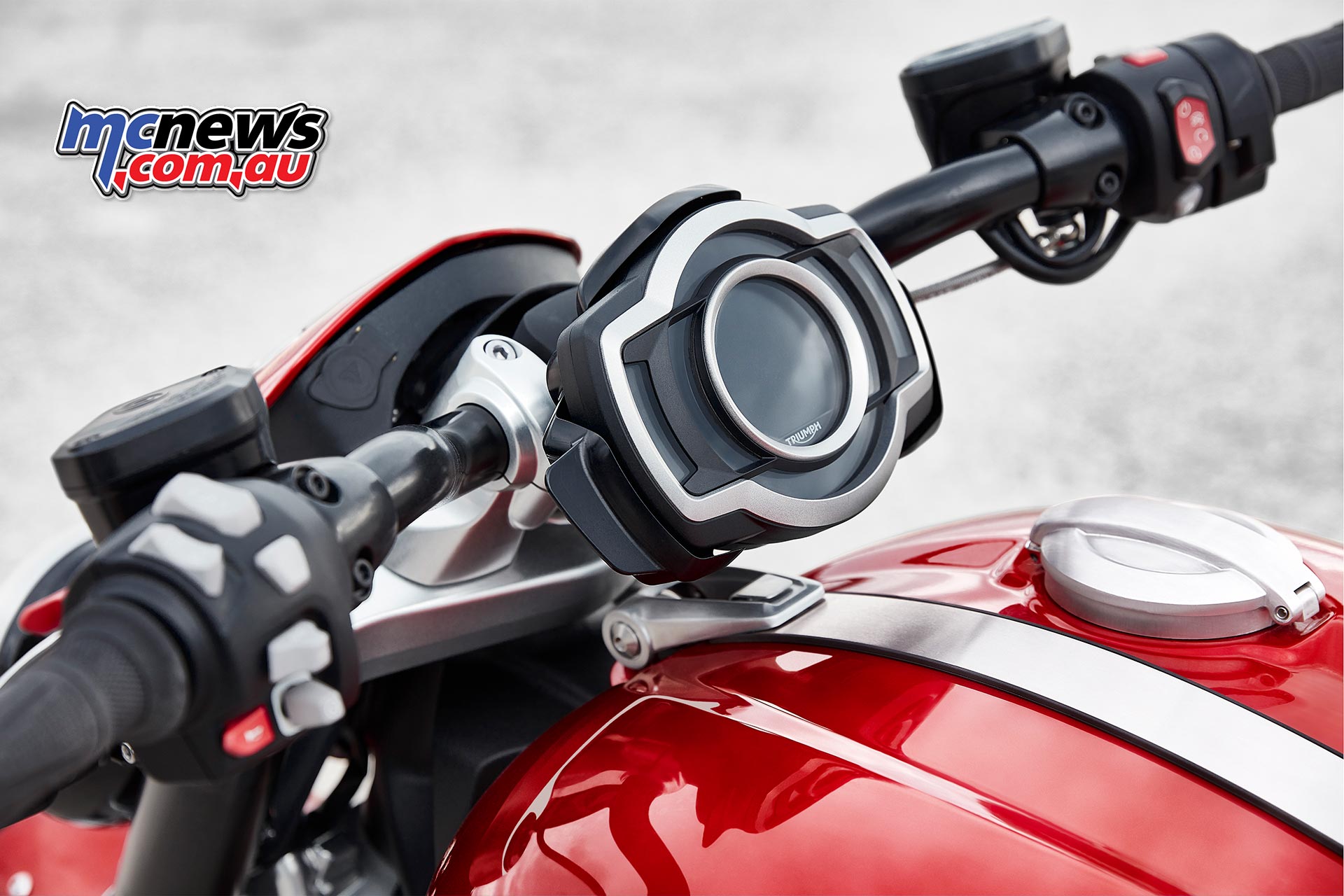
High-end Brembo Stylema radial mount calipers are pukka sports-bike level stoppers and do the business well. The fronts are aided by a generously sized 300 mm rear which is also a radial mount four-piston Brembo thanks to the ingenious way it mounts to the single side swing-arm. Both ends are powerful and progressive.
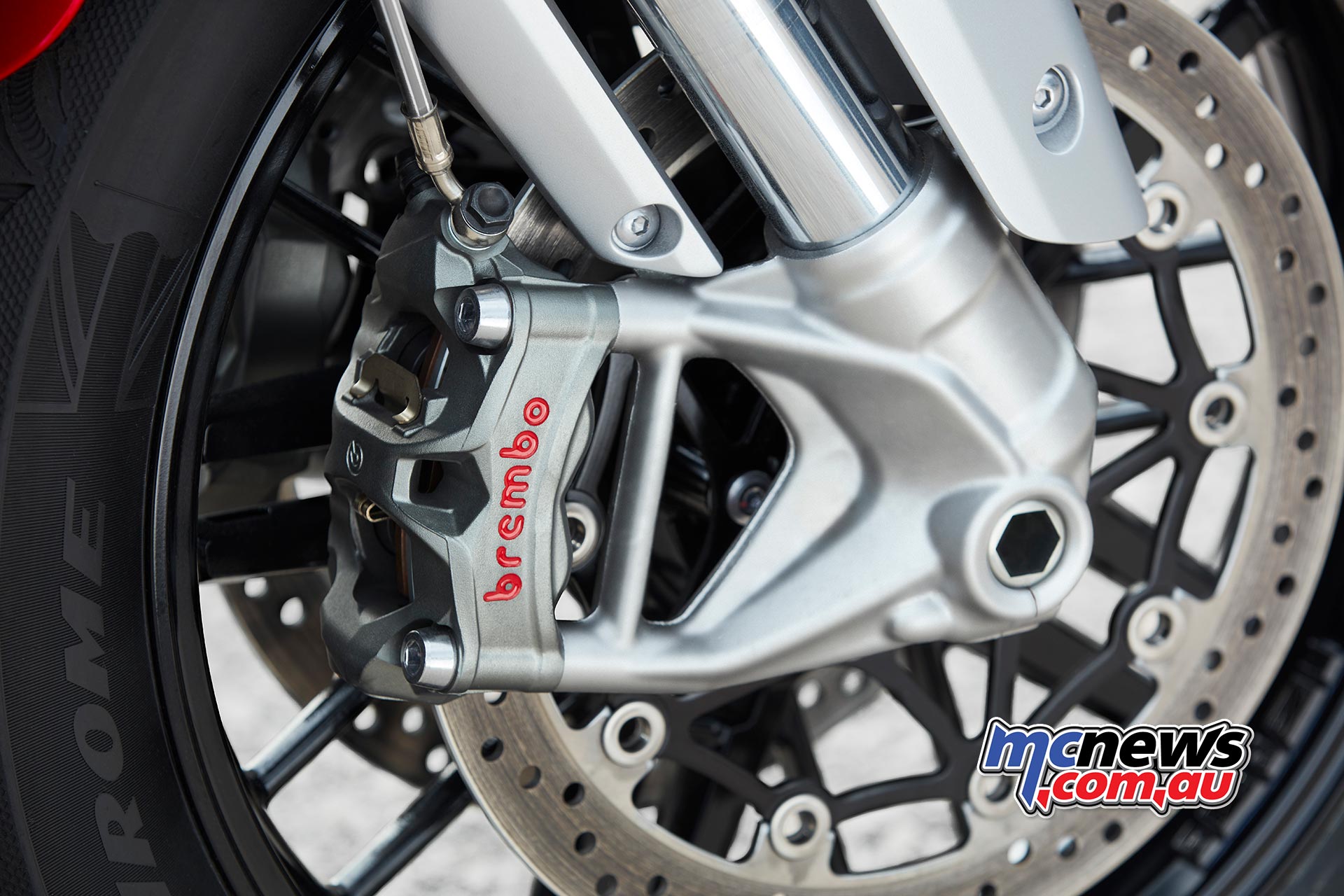
The nicely sculpted and finished fuel tank holds 18-litres of go juice which is handy as the big donk doesn’t mind a sip. Our riding was not exactly done with economy in mind, we burned around eight litres per 100 kilometres but if ridden normally I am sure that would drop to under seven or better, making a 250 kilometre touring range feasible.
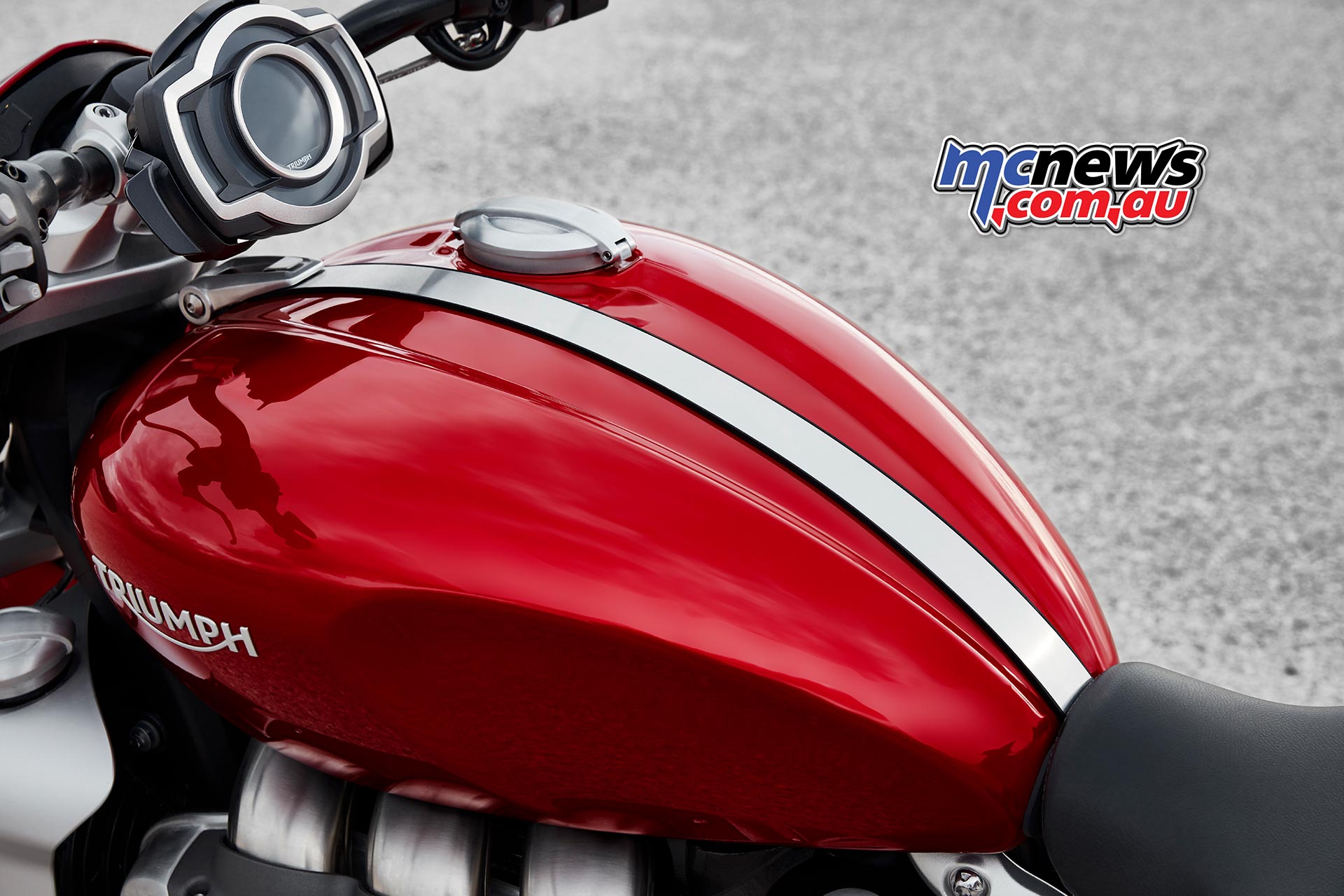
Full-colour TFT instrumentation is comprehensive, works well and is angle adjustable to suit riders of differing heights. Keyless ignition is standard, and the electronically operated steering lock is activated at the touch of a button. The GT also scores heated grips as standard while they are a $329 plus fitting option on the R.
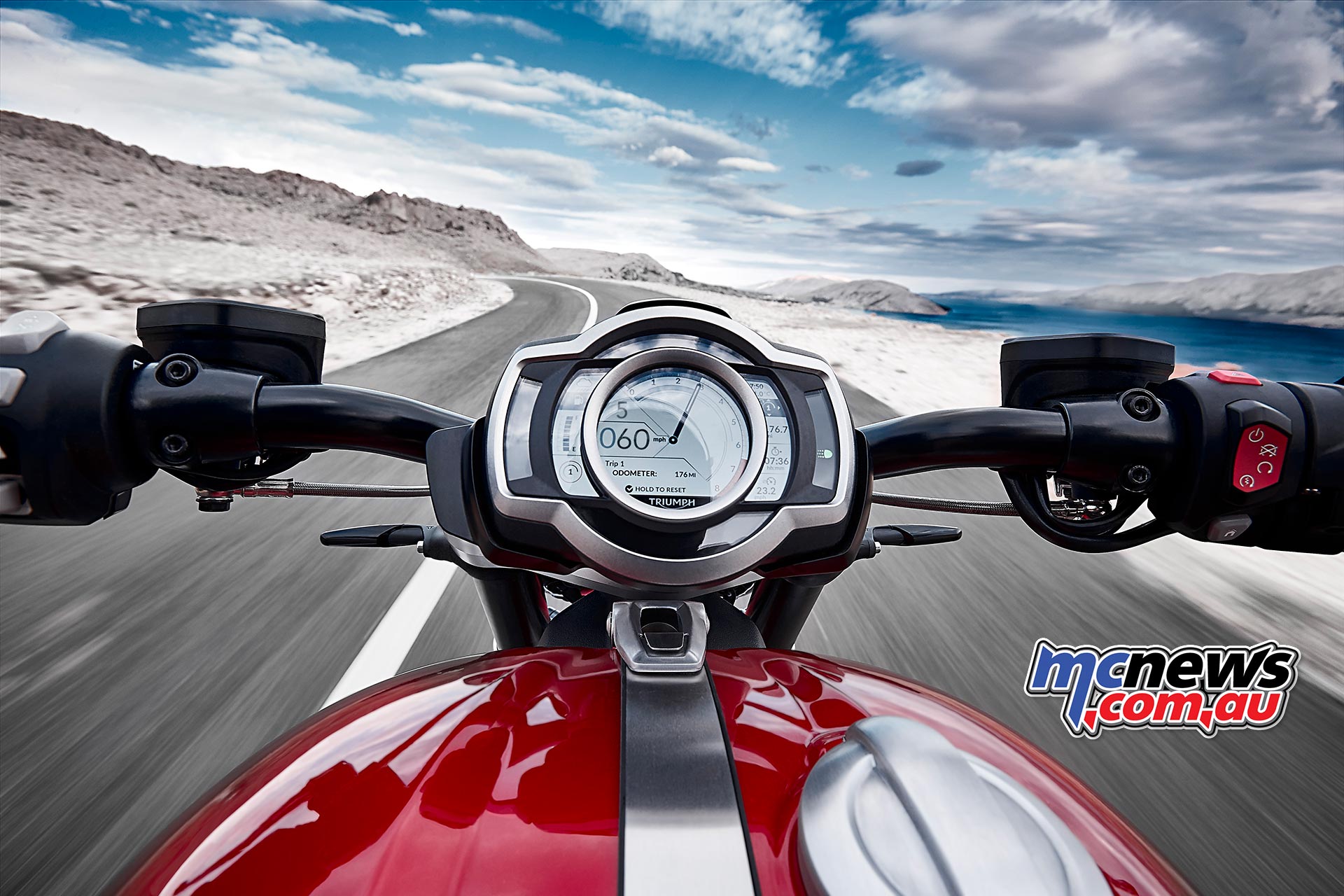
Triumph’s long awaited bluetooth functionality has finally arrived and delivers turn-by-turn navigation instructions via the display. The system is driven via a paired phone running the ‘My Triumph’ app and is an optional ($295 + fitting) extra via a connectivity module. This also facilitates integrated phone and music controls via the left bar when a bluetooth equipped helmet is paired to the system. Your GoPro camera can also be paired to the system and controlled via the bars.
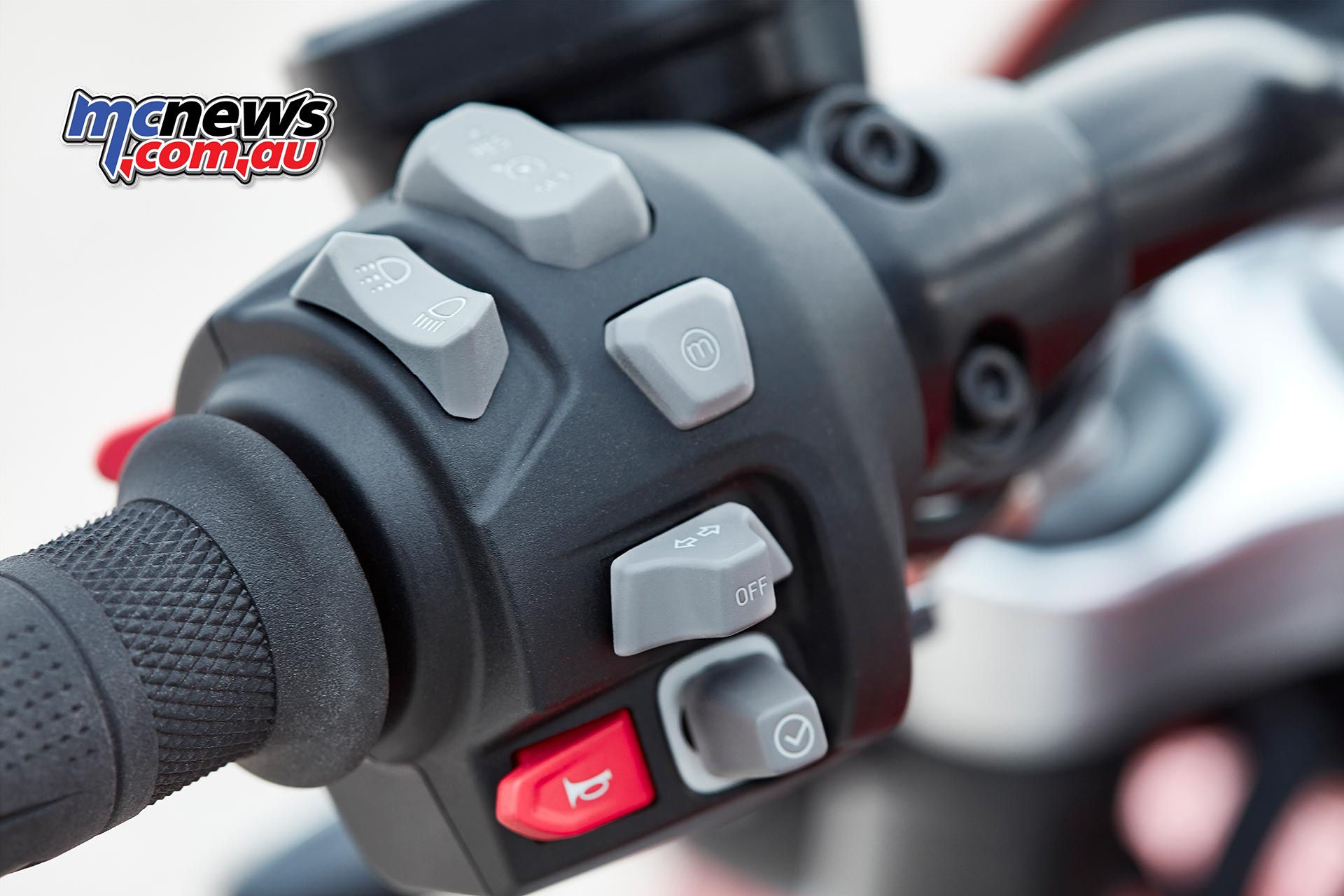
Cruise control is standard across both models along with four riding modes and top shelf Continental IMU driven lean-angle sensitive ABS and traction control systems. Hill hold control is also standard as is an under-seat USB power source.
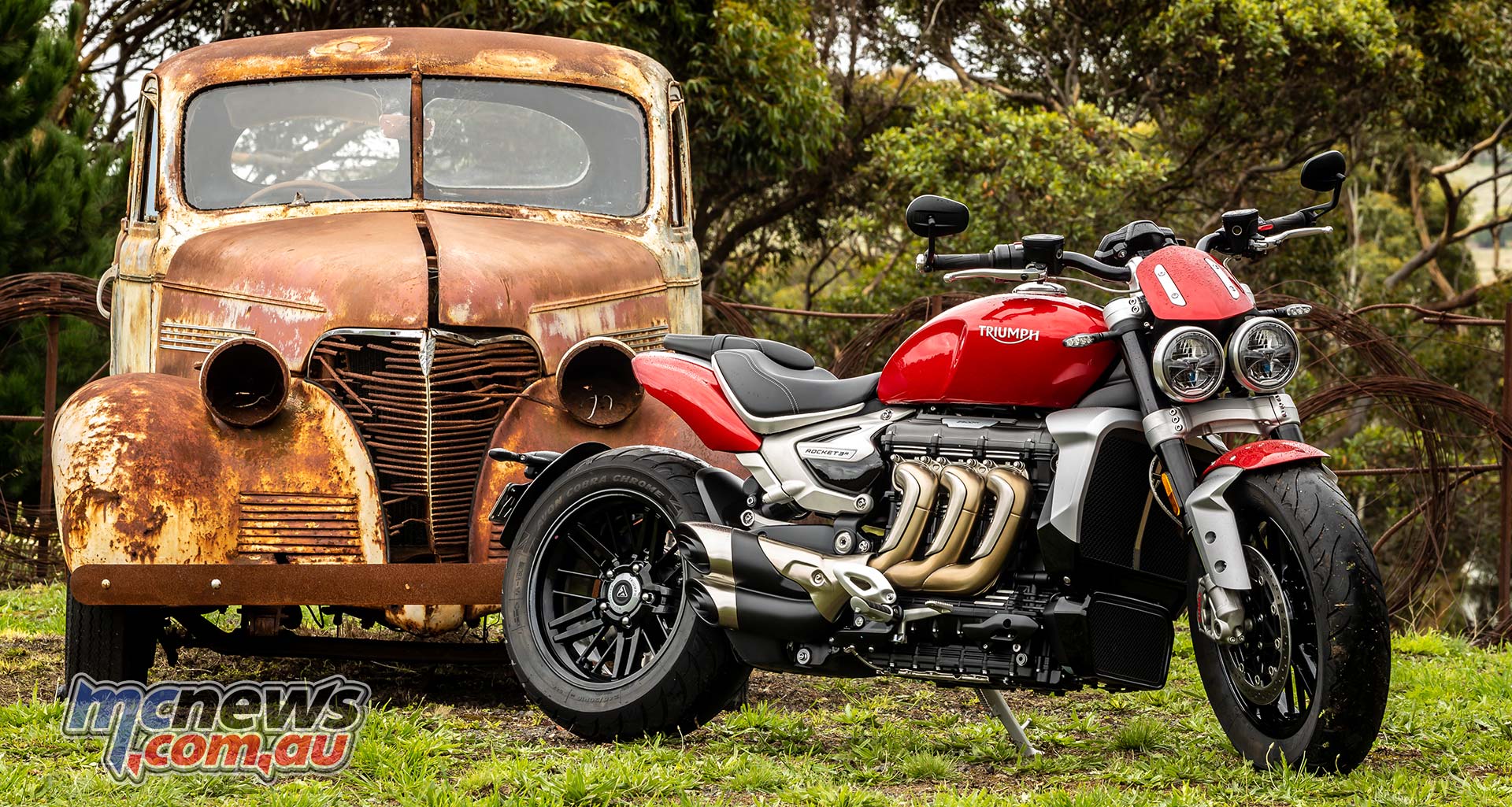
The LED headlights look striking with their eyebrow daytime running lights and the LED theme continues throughout from front to back in all the lighting systems. Tyre-pressure monitoring ($389) and a quick-shifter ($499) are also available on the options list.
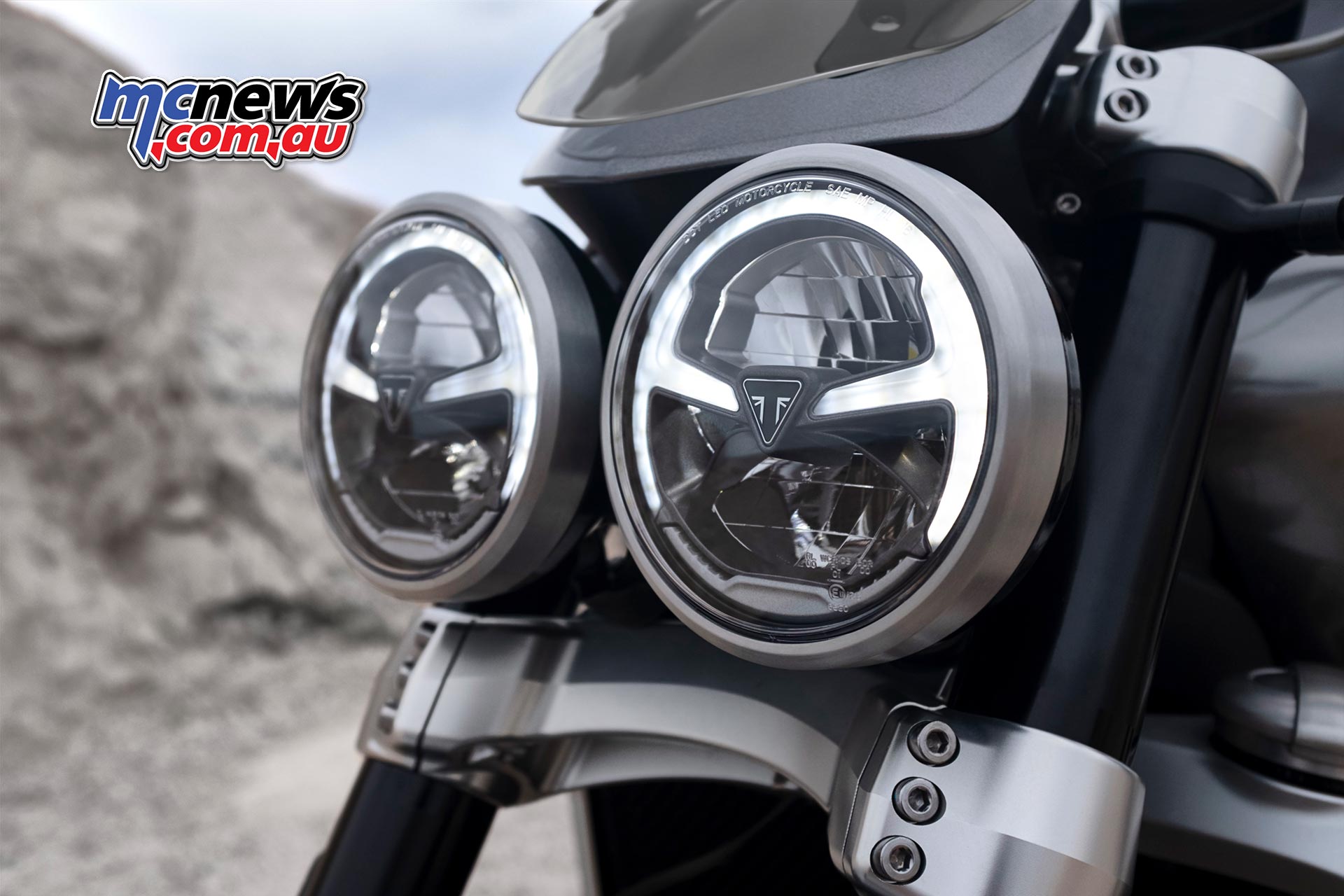
Strapping luggage to the Rocket looks as though it would be problematic but Triumph have a smart range of integrated options that add useful amenity to the bike for commuting or touring duties.
Both bikes tip the scales just over 290kg dry but you never really feel that heft as the bike hides its mass well.
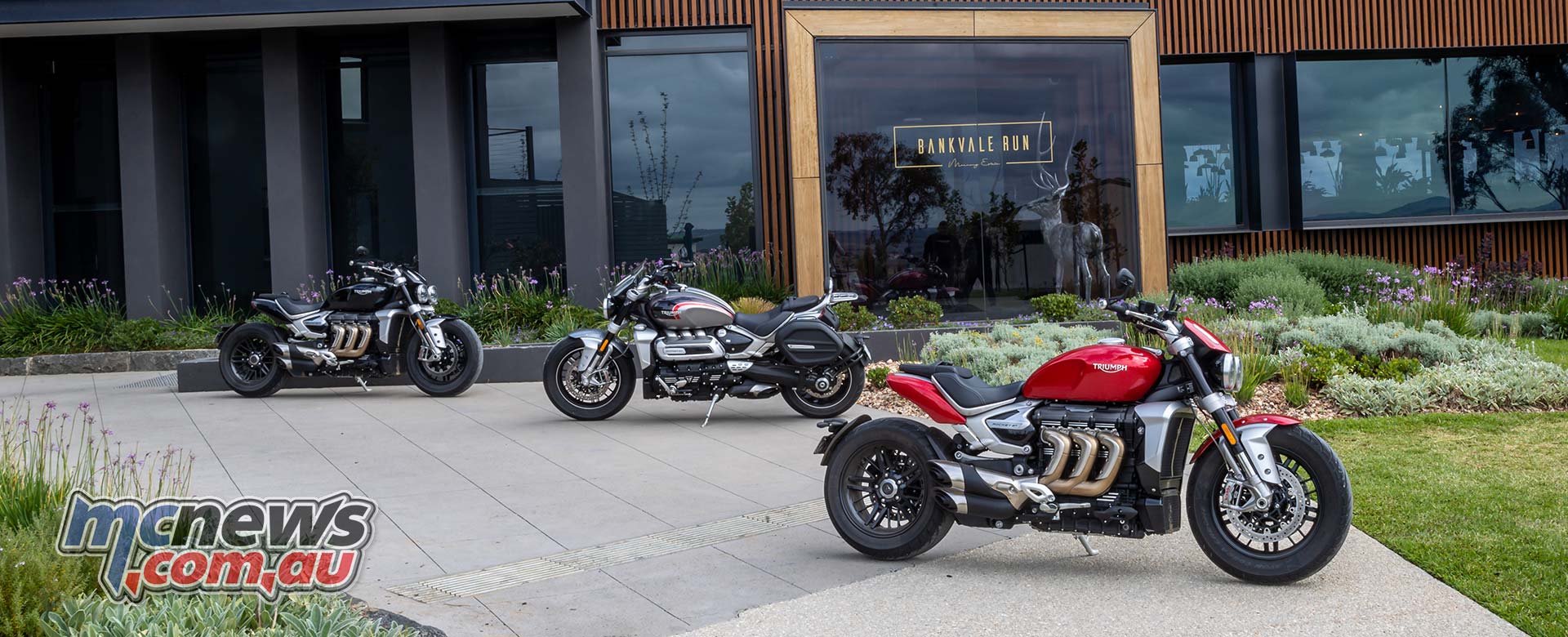
You really have to give the Triumph guys kudos. The bean counters have allowed the engineers the freedom to deliver all those very smart touches that make the Rocket 3 that little bit special.
Compare the engineering smarts of the big triple to American iron and it really does make the Yanks look more than a bit silly. I sincerely hope Triumph give us a more dressed bagger model formed from the sturdy and well engineered back bone of the Rocket 3.
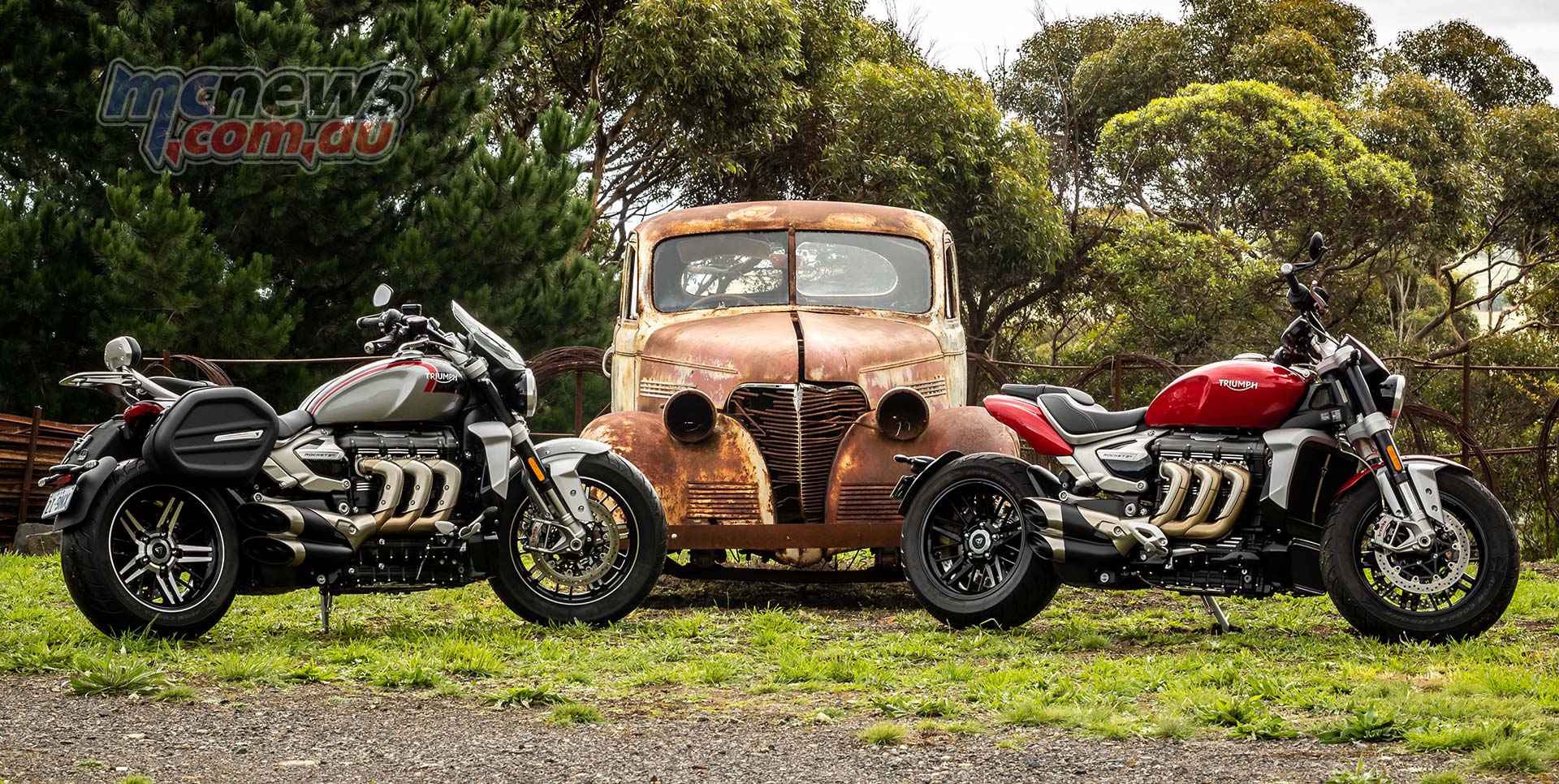
Triumph’s new generation Rocket 3 is strikingly handsome and has the balls to back up its machismo looks, all the while displaying a polish and poise that makes the whole package exude a certain level of quality. I think these traits will engender pride of ownership and satisfaction in anyone that hands over their hard earned to take one home for good.
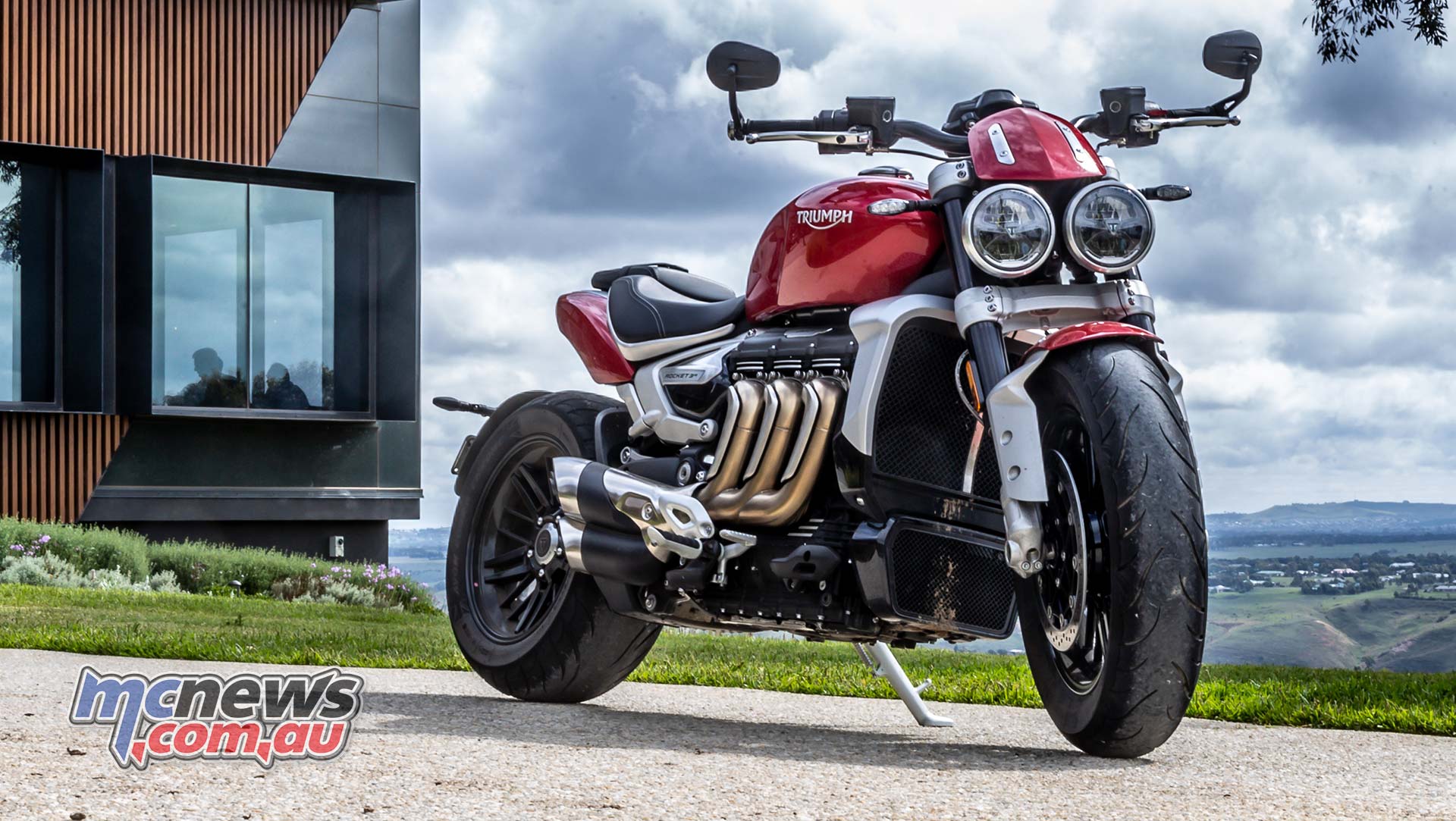
Triumph Rocket 3 R/GT Specifications
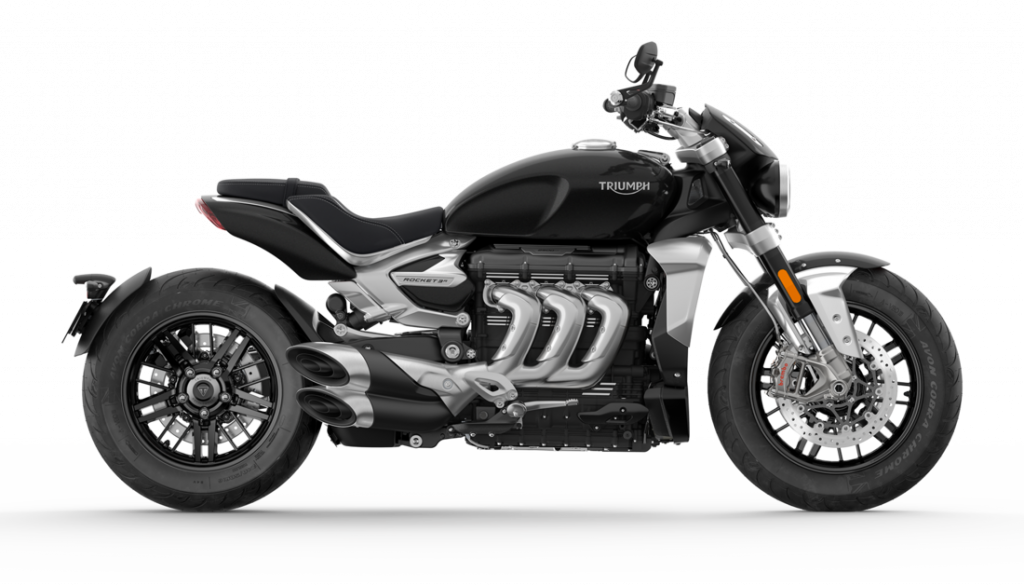
| Rocket 3 R Specifications – $27,990 | |
| Engine & Transmission | |
| Type | Inline 3-cylinder, water-cooled, DOHC |
| Capacity | 2458 cc |
| Bore | 110.2 mm |
| Stroke | 85.9 mm |
| Compression | 10.8:1 |
| Max Power EC | 167PS /165 bhp (123 kW) @ 6,000rpm |
| Max Torque EC | 221Nm @ 4,000rpm |
| System | Ride-by-Wire, fuel injected |
| Exhaust | Stainless 3-into-1 headers with 3 exit silencer / CAT box |
| Final Drive | Shaft, bevel box |
| Clutch | Wet, multi-plate hydraulically operated, torque assist |
| Gearbox | 6-speed |
| Chassis | |
| Frame | Full aluminium frame |
| Swingarm | Single-sided, cast aluminium |
| Front Wheel | 17 x 3.5in cast aluminium |
| Rear Wheel | 16 x 7.5in cast aluminium |
| Front Tyre | 150/80 R17 V |
| Rear Tyre | 240/50 R16 V |
| Front Suspension | Showa 47mm upside-down 1 1 cartridge front forks, compression and rebound adjuster. 120mm travel |
| Rear Suspension | Fully adjustable Showa piggyback reservoir RSU with remote hydraulic preload adjuster, 107mm rear wheel travel. |
| Front Brakes | Dual 320mm discs, Brembo M4.30 Stylema® 4-piston radial monobloc calipers, Cornering ABS |
| Rear Brakes | Single 300mm disc, Brembo M4.32 4-piston monobloc caliper, Cornering ABS |
| Instrument Display and Functions | TFT multi-functional instrument pack with digital speedometer, trip computer, digital tachometer, gear position indicator, fuel gauge, service indicator, ambient temperature, clock and rider modes (Rain/Road/Sport/Rider-configurable) – Triumph TFT Connectivity System can be added with accessory fitted Bluetooth module |
| Dimensions & Weights | |
| Width Handlebars | 889 mm |
| Height Without Mirror | 1065 mm |
| Seat Height | 773 mm |
| Wheelbase | 1677 mm |
| Rake | 27.9 º |
| Trail | 134.9 mm |
| Dry Weight | 291 kg |
| Tank Capacity | 18 L |
| Fuel Consumption | |
| Fuel Consumption | 6.82 l/100km (41.45 MPG) |
| CO2 Figures | EURO 5 Standard: 158g/km |
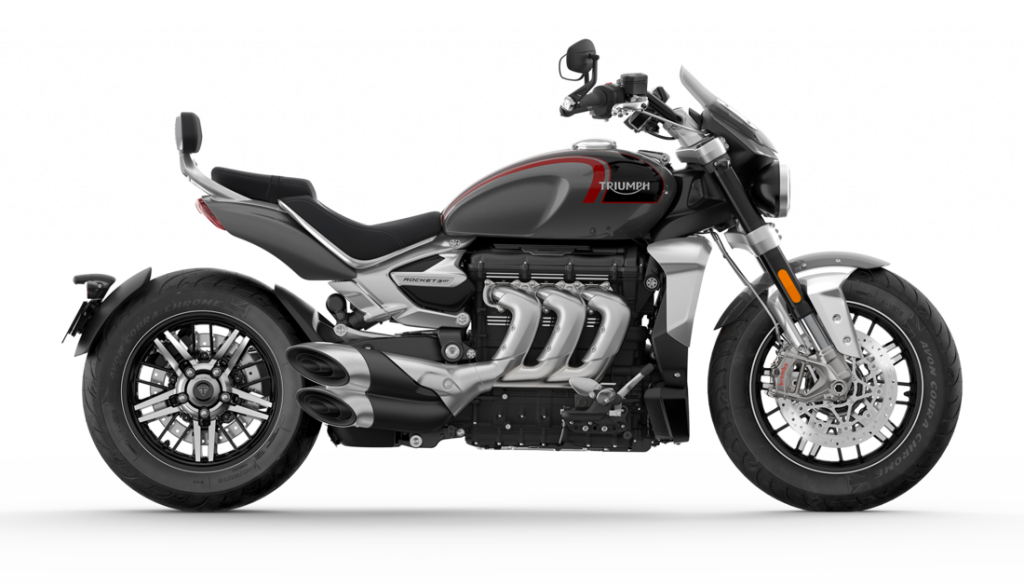
| Rocket 3 GT Specifications – $28,990 | |
| Engine & Transmission | |
| Type | Inline 3-cylinder, water-cooled, DOHC |
| Capacity | 2458 cc |
| Bore | 110.2 mm |
| Stroke | 85.9 mm |
| Compression | 10.8:1 |
| Max Power EC | 167 PS /165 bhp (123 kW) @ 6,000rpm |
| Max Torque EC | 221 Nm @ 4,000rpm |
| System | Ride-by-Wire, fuel injected |
| Exhaust | Stainless 3-into-1 headers with 3 exit silencer / CAT box |
| Final Drive | Shaft, bevel box |
| Clutch | Wet, multi-plate hydraulically operated, torque assist |
| Gearbox | 6-speed |
| Chassis | |
| Frame | Full aluminium frame |
| Swingarm | Single-sided, cast aluminium |
| Front Wheel | 17 x 3.5in cast aluminium |
| Rear Wheel | 16 x 7.5in cast aluminium |
| Front Tyre | 150/80 R17 V |
| Rear Tyre | 240/50 R16 V |
| Front Suspension | Showa 47mm upside-down 1 1 cartridge front forks, compression and rebound adjuster. 120mm travel |
| Rear Suspension | Fully adjustable Showa piggyback reservoir RSU with remote hydraulic preload adjuster, 107mm rear wheel travel. |
| Front Brakes | Dual 320mm discs, Brembo M4.30 Stylema® 4-piston radial monobloc calipers, Cornering ABS |
| Rear Brakes | Single 300mm disc, Brembo M4.32 4-piston monobloc caliper, Cornering ABS |
| Instrument Display and Functions | TFT multi-functional instrument pack with digital speedometer, trip computer, digital tachometer, gear position indicator, fuel gauge, service indicator, ambient temperature, clock and rider modes (Rain/Road/Sport/Rider-configurable) – Triumph TFT Connectivity System can be added with accessory fitted Bluetooth module |
| Dimensions & Weights | |
| Width Handlebars | 886 mm |
| Height Without Mirror | 1066 mm |
| Seat Height | 750 mm |
| Wheelbase | 1677 mm |
| Rake | 27.9 º |
| Trail | 134.9 mm |
| Dry Weight | 294 kg |
| Tank Capacity | 18 L |
| Fuel Consumption | |
| Fuel Consumption | 6.82 l/100km (41.45 MPG) |
| CO2 Figures | EURO 5 Standard: 158g/km |
2020 Triumph Rocket 3 R and Rocket 3 GT Accessories
The new Rocket 3 R and GT can be personalised to suit the rider’s preferences with over fifty genuine Triumph accessories that have all been designed, engineered and tested alongside the development of these all-new motorcycles.
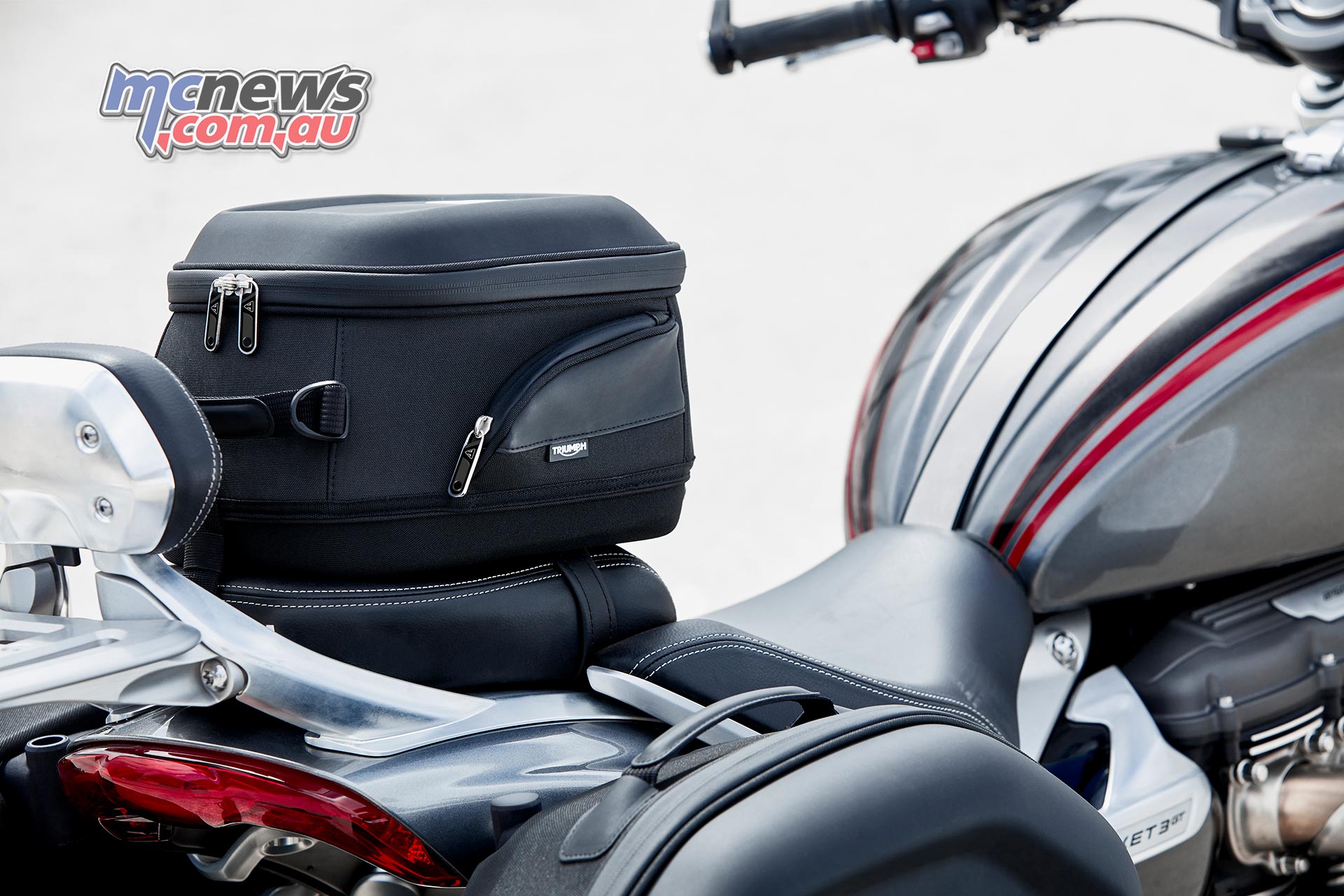
The new Rocket 3 luggage range:
- Innovative Triumph patented cast aluminium pannier ‘retractable & ‘lockable’ mounting system
- 20L sports panniers
- 12L magnetic tank bag
- Innovative Triumph patented 9L quick-release tail pack
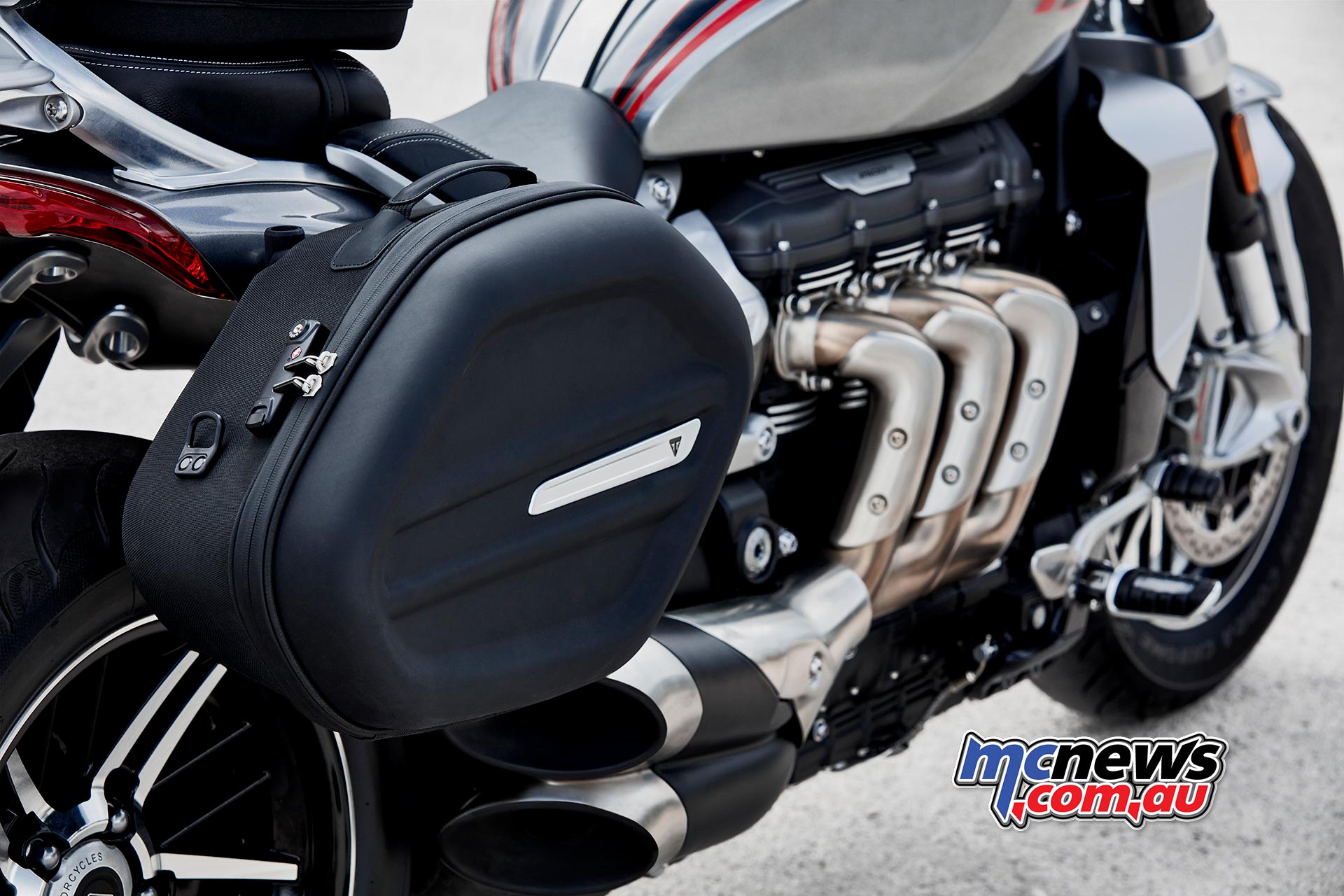
New comfort accessories include:
- Roadster and touring handlebars
- Touring and sport seat
- Rider seat pad
- Comfort pillion seat
- Passenger backrest and pads with billet machined plate
- Passenger backrest rack
- Forward and mid foot controls
- Knee pads
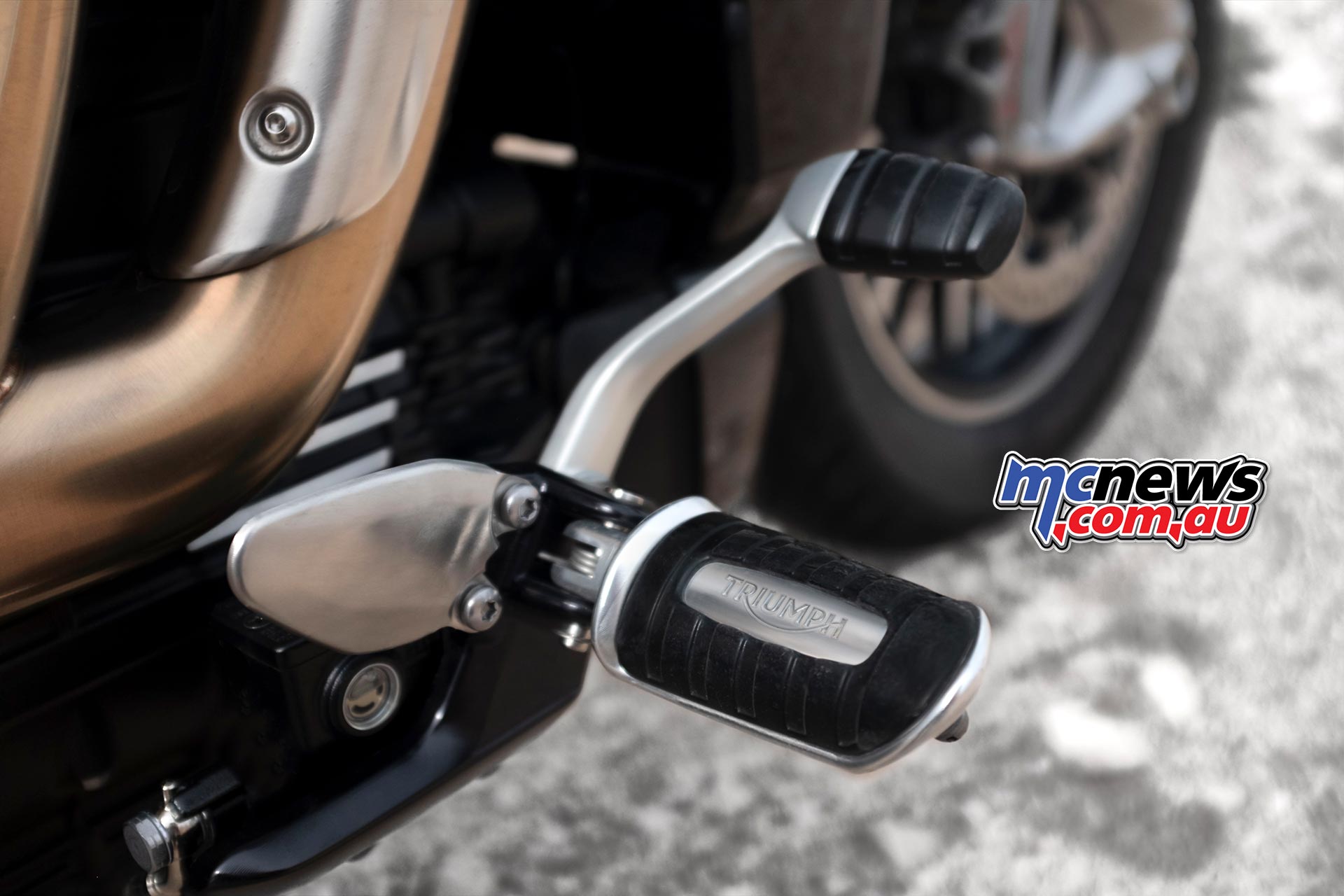
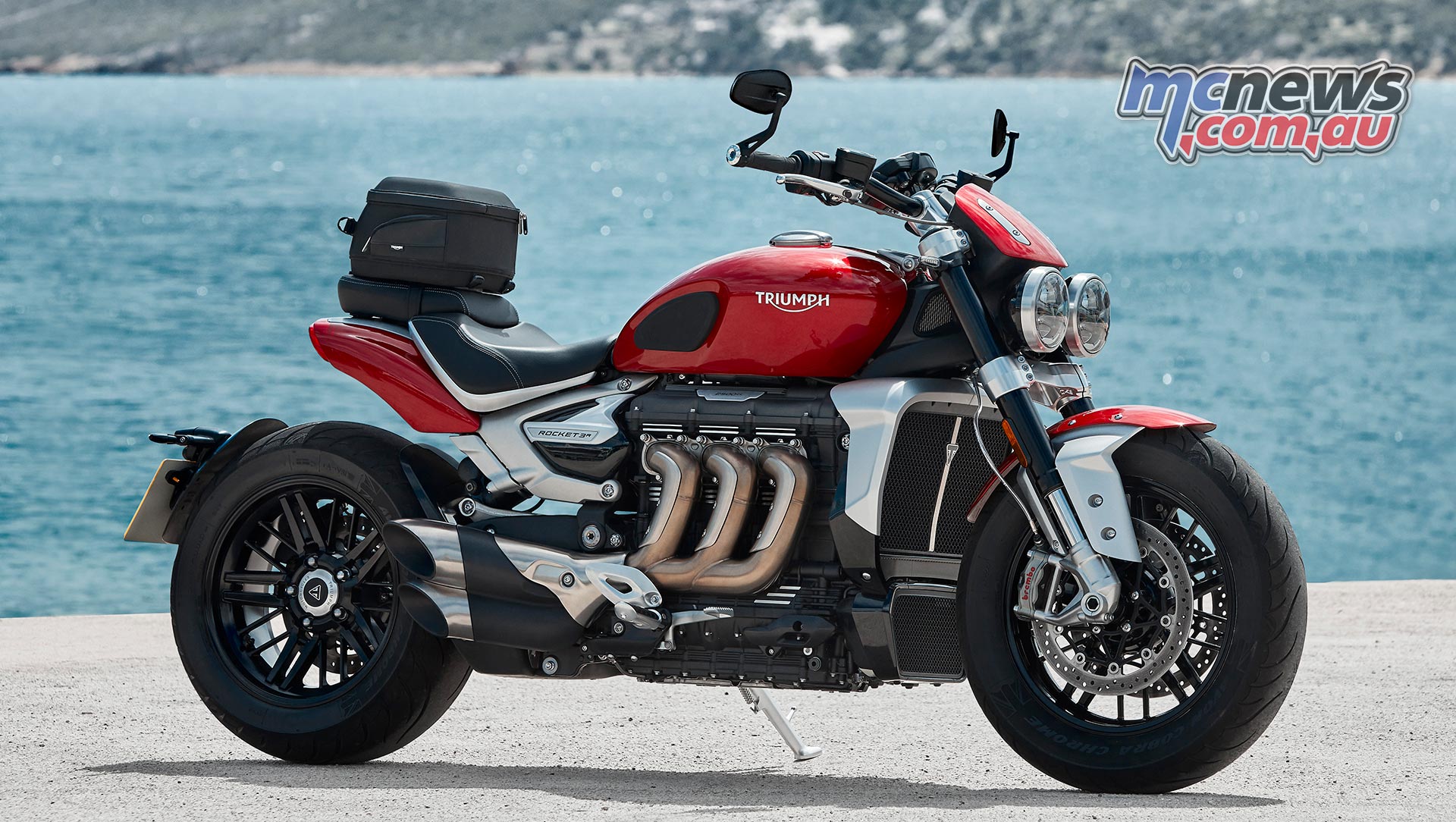
2020 Triumph Rocket 3 R and Rocket 3 GT ‘Highway’ Inspiration Kit
To showcase the additional level of touring capability that can be added to the Rocket 3, Triumph have combined a selection of luggage and touring focused accessories that riders can use as the starting point to design their own Rocket 3 R & GT, or to have fitted by their dealer as a complete set. The Highway inspiration kit includes:
- Luggage rack
- Sports panniers
- Pannier mount kit
- Triumph Shift Assist
- Triumph TFT Connectivity System
